



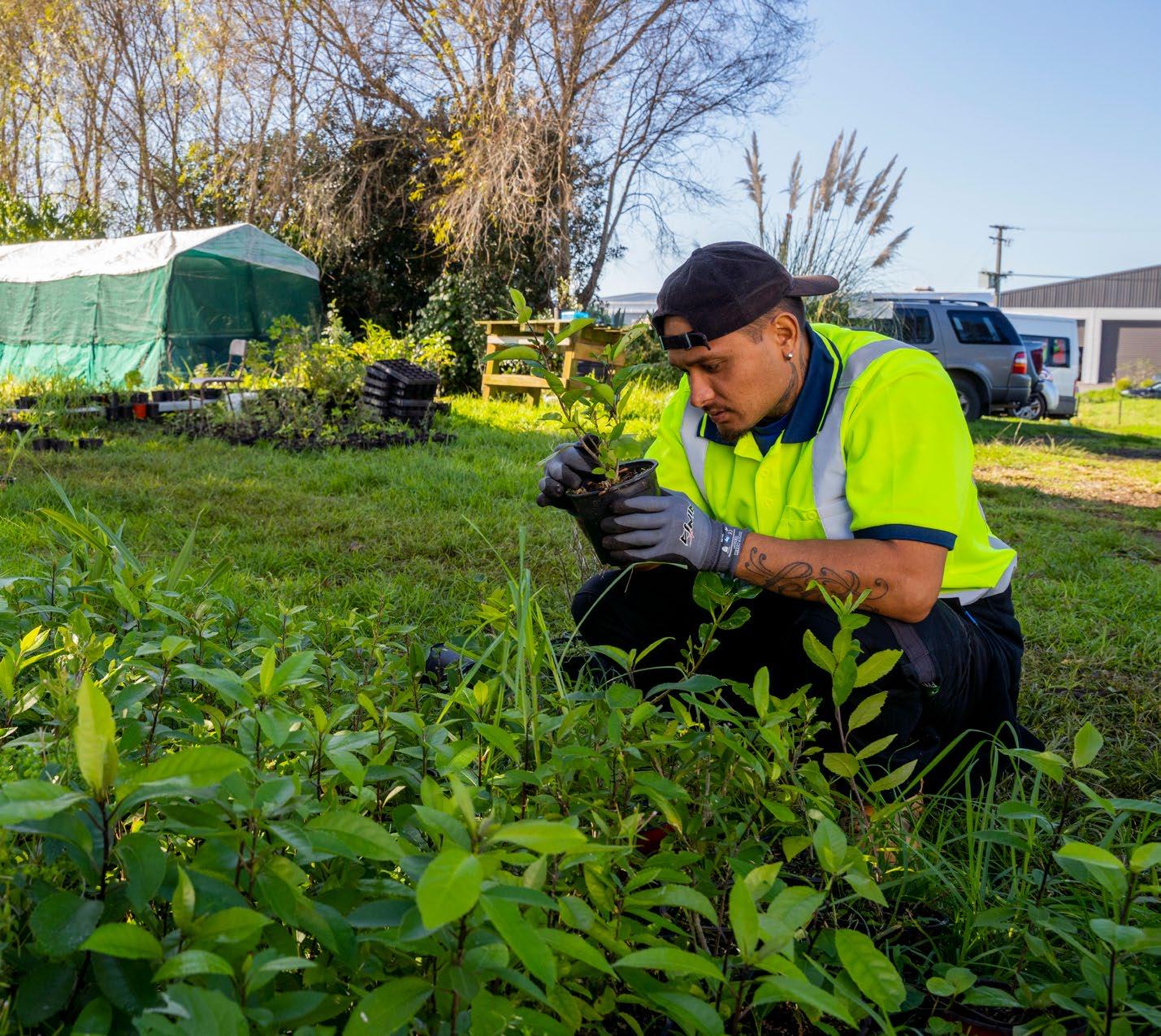
















Waiwhakaiho e rere tonu nei i tōu kāuru, a Maunga Taranaki, tēnā korua.
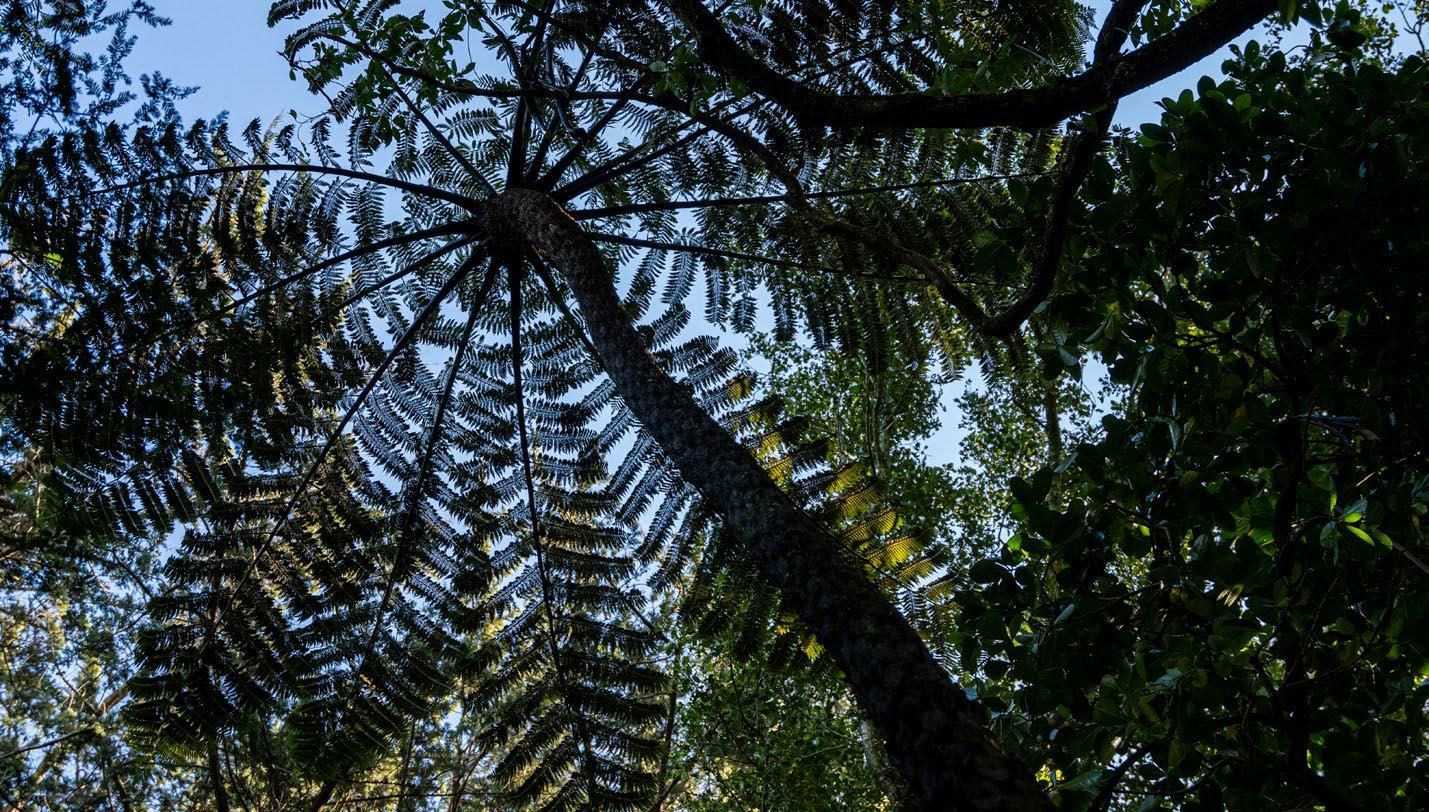
Ko tō tātou whenua e manaaki nei i ngā uri a Tawhirikura, o Te Atiawa Iwi, ka rere te mihi ki a koutou katoa.
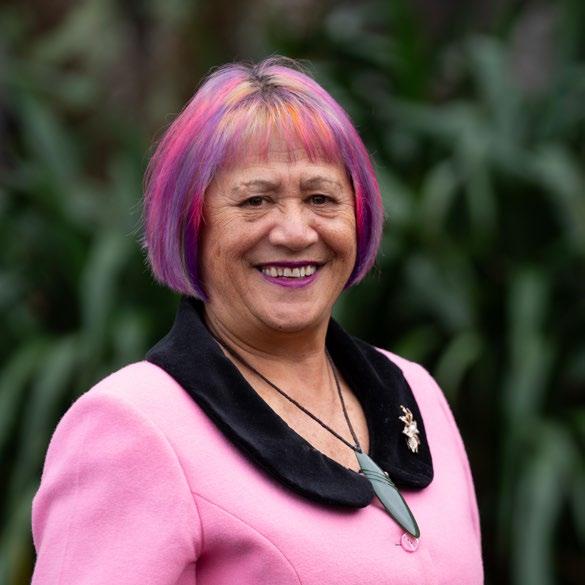
E ngā tupuna o tō tātou hapū o Tawhirikura, kia au te moe. He karanga tēnei ki a koutou, kia tuku mai i tō koutou korowai aroha, hei whakahaumaru i a mātou, ngā uri.
E karanga ana ahau ki te whānau, kei ngā hau e whā o Aotearoa, ki te tiaki i ō koutou tukunga iho.
Tēnā koutou, tēnā koutou, tēnā tātou katoa.
It is my pleasure as the Chair to present to you the Ngāti Tawhirikura Hapū Trust Annual Report for 20222023.
Sometimes it can seem as if the last year has been a long one of challenges and hard mahi, with rising food prices, the increasing cost of housing, the ongoing impact of COVID-19, and injustice and harm to people and children in Aotearoa and across the world.
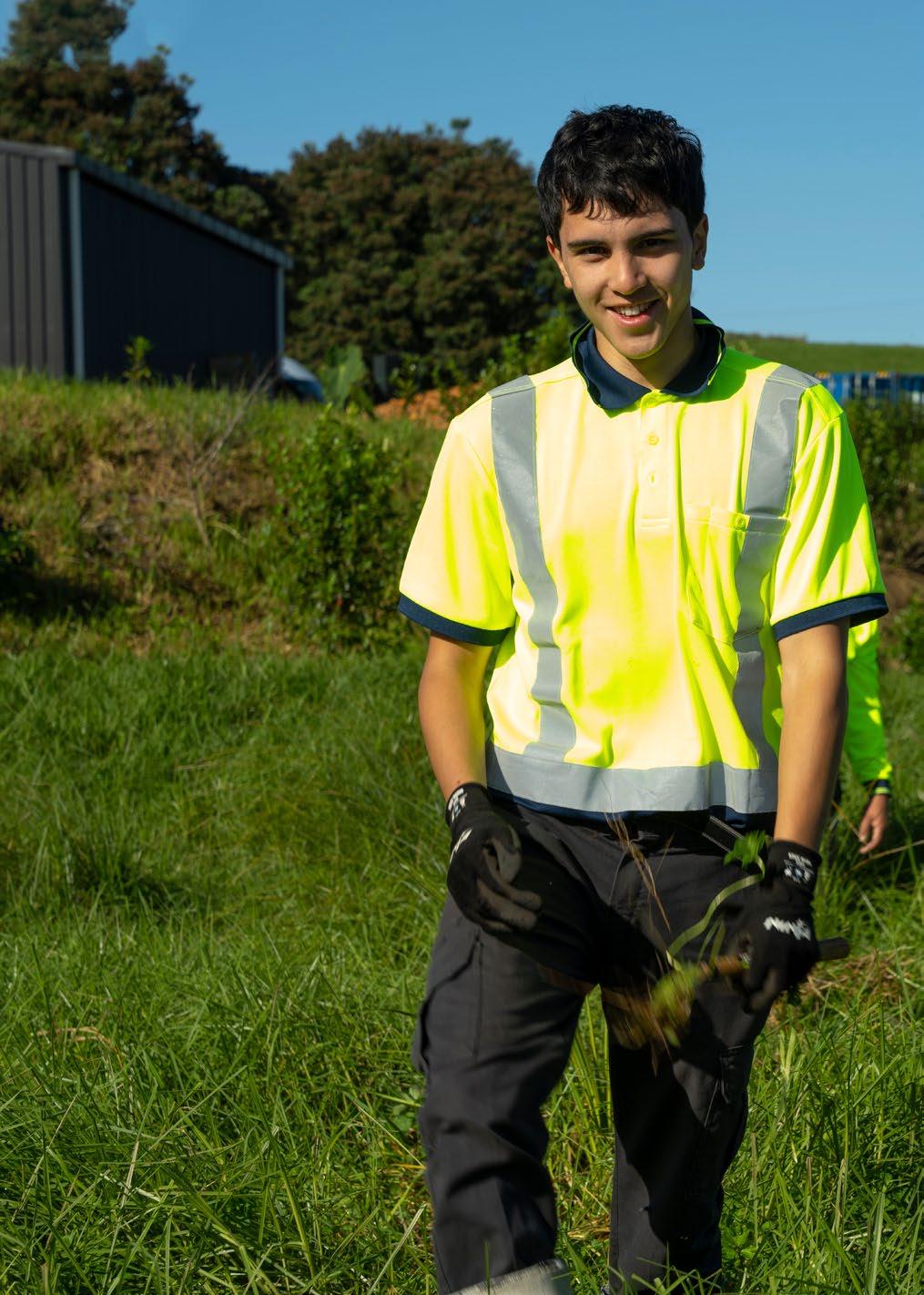
But then I remember that although we may only play a small part in the universe, it is an important one for our whānau, rangatahi, and tamariki, and that there are great opportunities for the uri of Ngāti Tawhirikura Hapū.
It has been a very busy year, especially for the Trustees elected on 16 October 2022 and who have worked hard in building internal governance and management systems and fostering relationships with a whole range of people and organisations to enable the hapū to keep moving forward.
I acknowledge the strong and respectful connections we have with the hapū chairs of Puketapū and Ngāti Te Whiti, who share an interest in our activities, along with the enduring relationships we hold with Te Kotahitanga o Te Atiawa, Toi Foundation, Government agencies such as MBIE (Creative NZ), Manatū Mō

Te Taiao, and Department of Conservation (DOC), Parininihi ki Waitōtara Incorporation (PKW), Wild for Taranaki, Manawa Energy (Trust Power), Fonterra (Mauri Compass training), Clelands, Goggles On, WITT (Western Institute of Technology at Taranaki), Massey University and the University of Waikato.

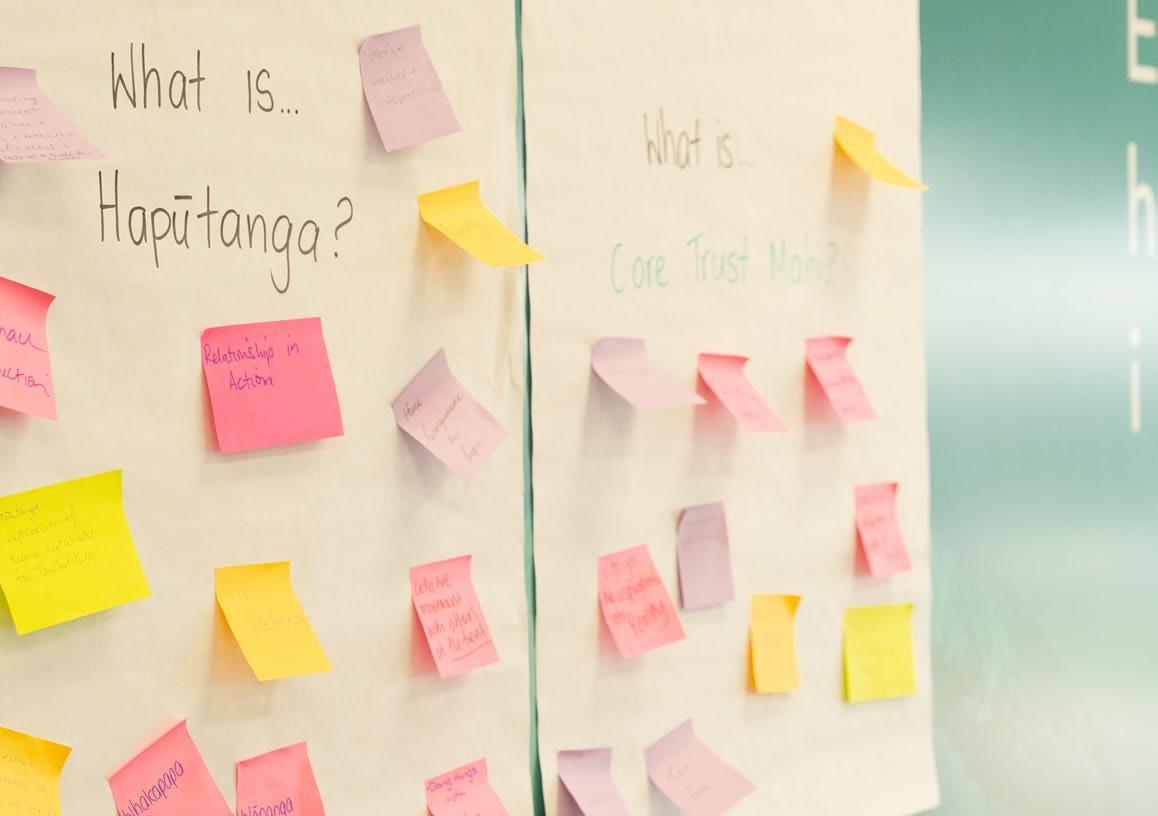
The way we govern and manage the hapū business has been a real focus for this financial year, with new meeting systems and processes now in place, and a new governance induction programme initiated, developed, and implemented. Policies for governance, finance, human resources, and operations have been developed and approved by the Trustees, with all-important health and safety policies a work in progress.
Broadpro, a governance management software system, installed for easy and prompt access to all Trust documents and information is now fully operational.
We have also been working to identify and implement a management structure to allow the Chair to focus on governance and matters specific to the roles and responsibilities of a Trust. The Trustees are confident that the appointment of an operational manager will be a positive move to enable us to build the continued success of the hapū business activities. Key to that
“... although we may only play a small part in the universe, it is an important one for our whānau, rangatahi, and tamariki, and that there are great opportunities for the uri of Ngāti Tawhirikura Hapū.”
 Bev Gibson
Bev Gibson
role will be continuing to foster the sound, trusted and enduring relationships mentioned earlier in this report and the business relationships that have been established with Primehort, Mitre 10, TSB, Inland Revenue Department (IRD), Primo, Genesis, Leading Taranaki, and Tasman Safety Limited.
Through the establishment of these relationships and the deployment of an operational manager, the Board strongly believes that these will provide much needed stability, accountability and quality of service by which the Trust can grow and develop now and into the future.
was,
An independent financial service provider, Graham Brown & Co, were appointed following a robust selection process. Graham Brown & Co now manage the hapū financial systems and processes. The four hapū bank accounts (Reserve Account, Hapū Account, Distributions Account, and Debit Credit Card Account) have also been streamlined to ensure finances are efficient and transparent.
A Financial Annual Review (2021-2022) and a full Annual Financial Audit (2022-2023) were completed by Vanburwray Chartered Accountants.
Looking forward, the year ahead holds opportunities and challenges for us, probably in equal measure!
To guide and assist the hapū to achieve measured success, a strategy hui was recently held to help steer the focus of the hapū. While the strategic document is yet to be finalised, early themes were noted. They include:
Effective succession and transparent governance, leadership, and operations to achieve the strategic goals and objectives of the hapū, to help grow capability and capacity for the hapū and employment of uri, to fully realise economic continuous viability, embracing potential opportunities that come our way, or that we need to seek.
Achieve a wider reach of uri and maintain a cohesive and connected whānau, engage all generations with

a sense of togetherness, and increase our knowledge of whakapapa and whenua connections by telling the well-known and unheard stories to keep alive Ngāti Tawhirikura Hapū history.
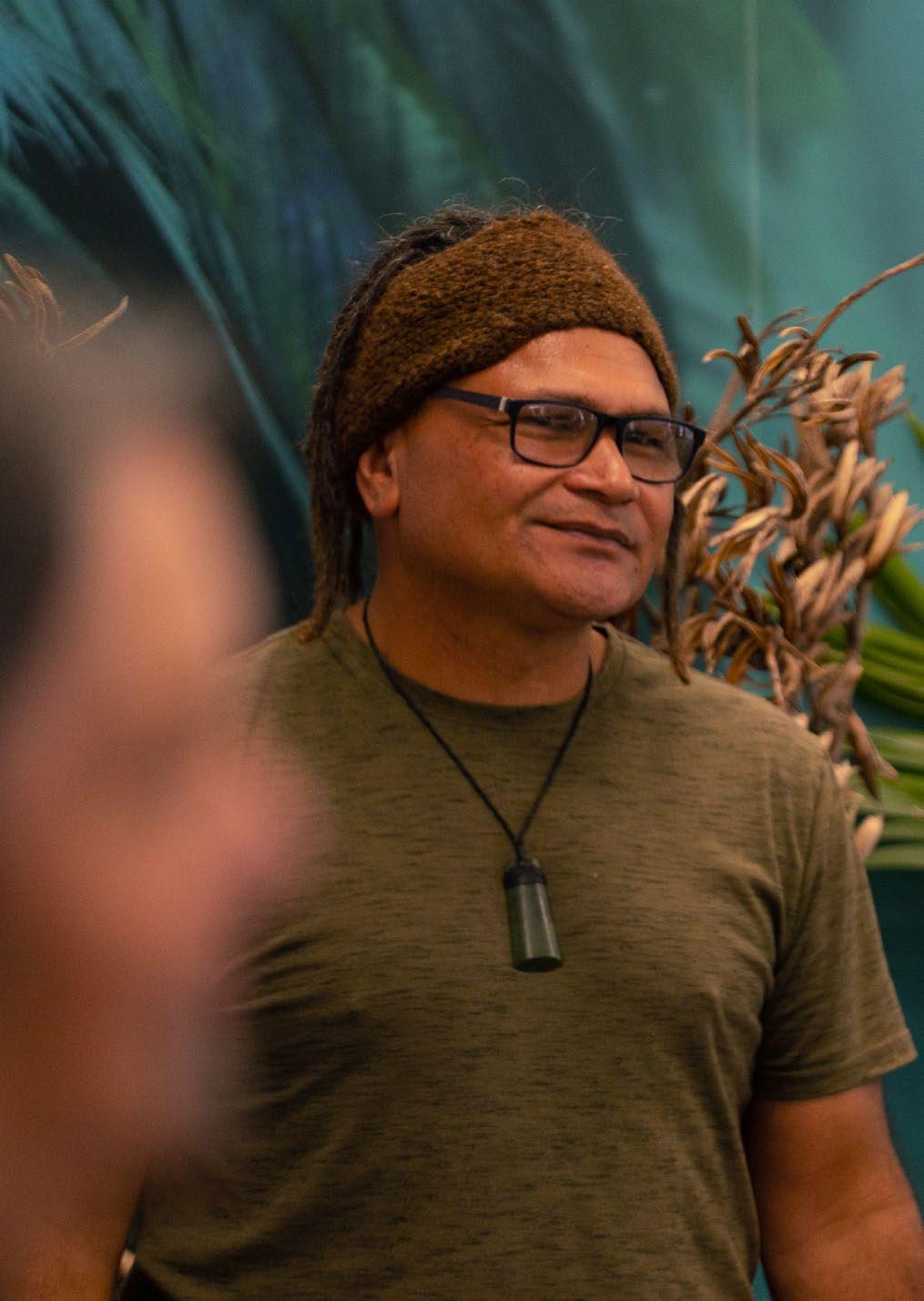
To foster and revitalise te reo me ōna tikanga and customary practices of Ngāti Tawhirikura Hapū, encapsulating our values that tell others who we are, what has been achieved, and our future direction.
All the progress achieved in the year just gone, and the mahi in the year ahead was, and will only be possible with the willingness of skilled, fit, and competent hapū Trustees. I commend the current Trustees for their courage and resilience to stand strong, notwithstanding the challenges we have endured, and for ensuring all we do is accomplished within a framework of tika, pono, and aroha for all the uri of Ngāti Tawhirikura Hapū. The commitment and dedication you have shown for the uri of Ngāti Tawhirikura Hapū are acknowledged and celebrated.
To the whānau who have taken on this role as Trustees - thank you, thank you, thank you again. Nō reira e ngā uri a Tawhirikura, there is much more to be done, e haere tonu ana te mahi!
Ka rere te manu, ka kawea te aroha mai i te whānau kei Taranaki ki a koutou ko ō kōutou whānau. Tēnā koutou, tēnā koutou, tēnā koutou katoa.
Bev Gibson Chairperson“All the progress achieved in the year just gone, and the mahi in the year ahead
and will only be possible with the willingness of skilled, fit, and competent Hapū Trustees.”
Bev Gibson


A review of the Ngāti Tawhirikura Hapū Trust 2021/22 performance report provided valuable insight into improving the financial systems and processes of the organisation.

The review, carried out by accountancy firm Vanburwray Chartered Accountants (VBW), was required after the Trust changed ‘tiers’ (from Tier 4 to Tier 3) which define the reporting standards required of registered charities. The change occurred due to the increased amount of funding the Hapū received over the year.


“The review was a welcome opportunity to get an outside perspective on the effectiveness of our accounting systems and internal controls,” explained Bev Gibson, Trust Chair.
“Several areas were highlighted for improvement, and the Hapū Trust has been working to address those enhancements over the past year.”
One of the key focus areas was to implement more robust and effective financial management systems that brought different elements of Trust activities together under a single overview.
“We have appointed an independent financial service provider, Graham Brown & Co, to ensure all Hapū financial transactions are efficiently and transparently managed to meet our reporting responsibilities”, says Bev.
Document management was another area where existing practices needed to be improved. All Hapū documentation, policies, agreements, and Trust meeting minutes are catalogued in an ordered systemised manner within an installed computer software system. Boardpro aims to help ensure paperwork and records are easily accessible.
Trustees have also developed, approved, and implemented policies relating to governance, finance, human resources, and operations. Further work is being carried out to finalise health and safety policies.
Contractor agreements have been formalised. Invoice rationalisation processes are also in place to ensure consistency and compliance.
The 2021/2022 financial statements were reviewed and several errors were identified and corrected – the updated version is available at the AGM.
“Ultimately, the review has enabled the Trustees to ensure the Hapū activities are managed as required by legislation,” says Bev. “It will mean we will be better placed to carry out the mahi we do on behalf of our uri and whānau going forward.”

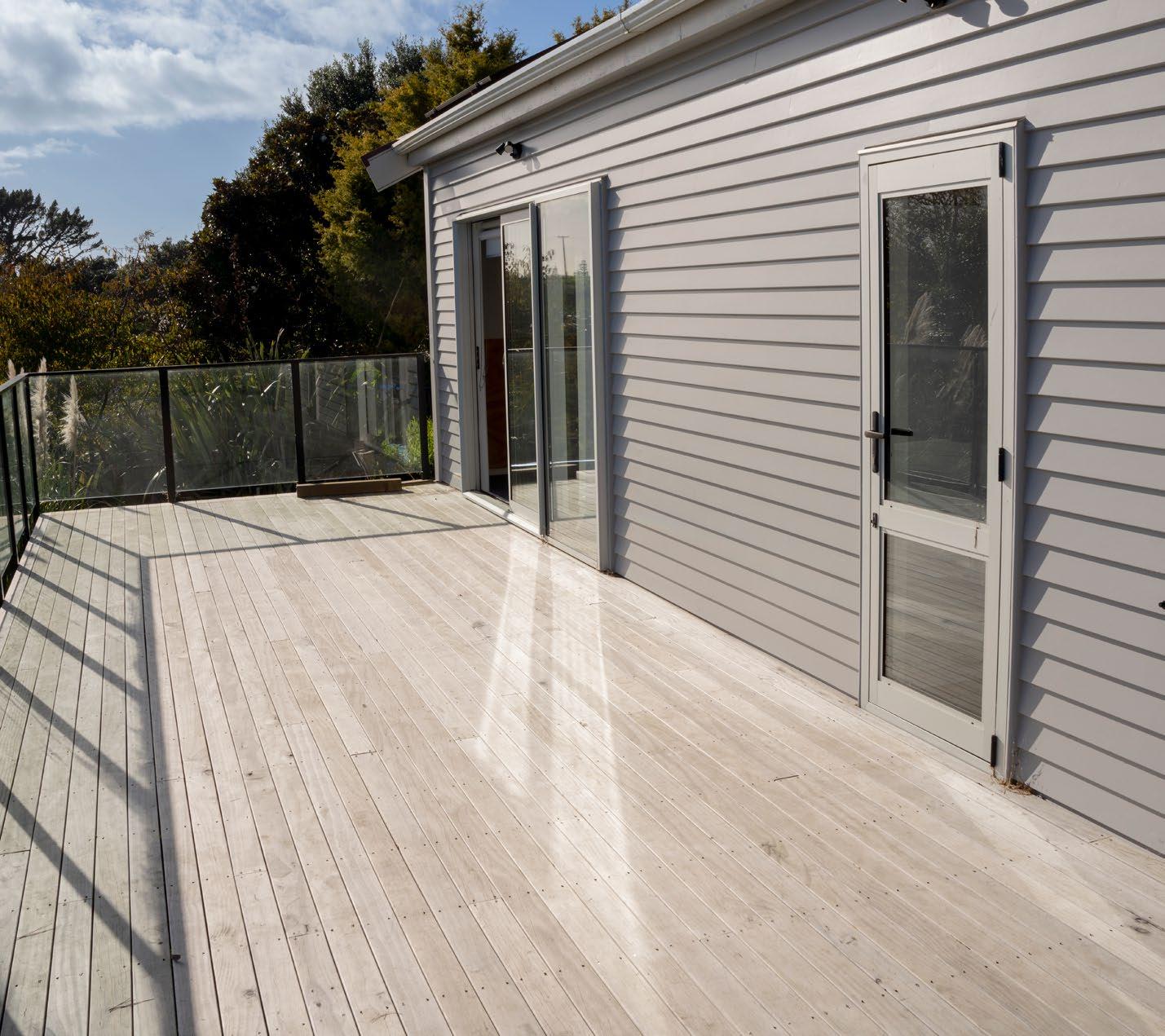

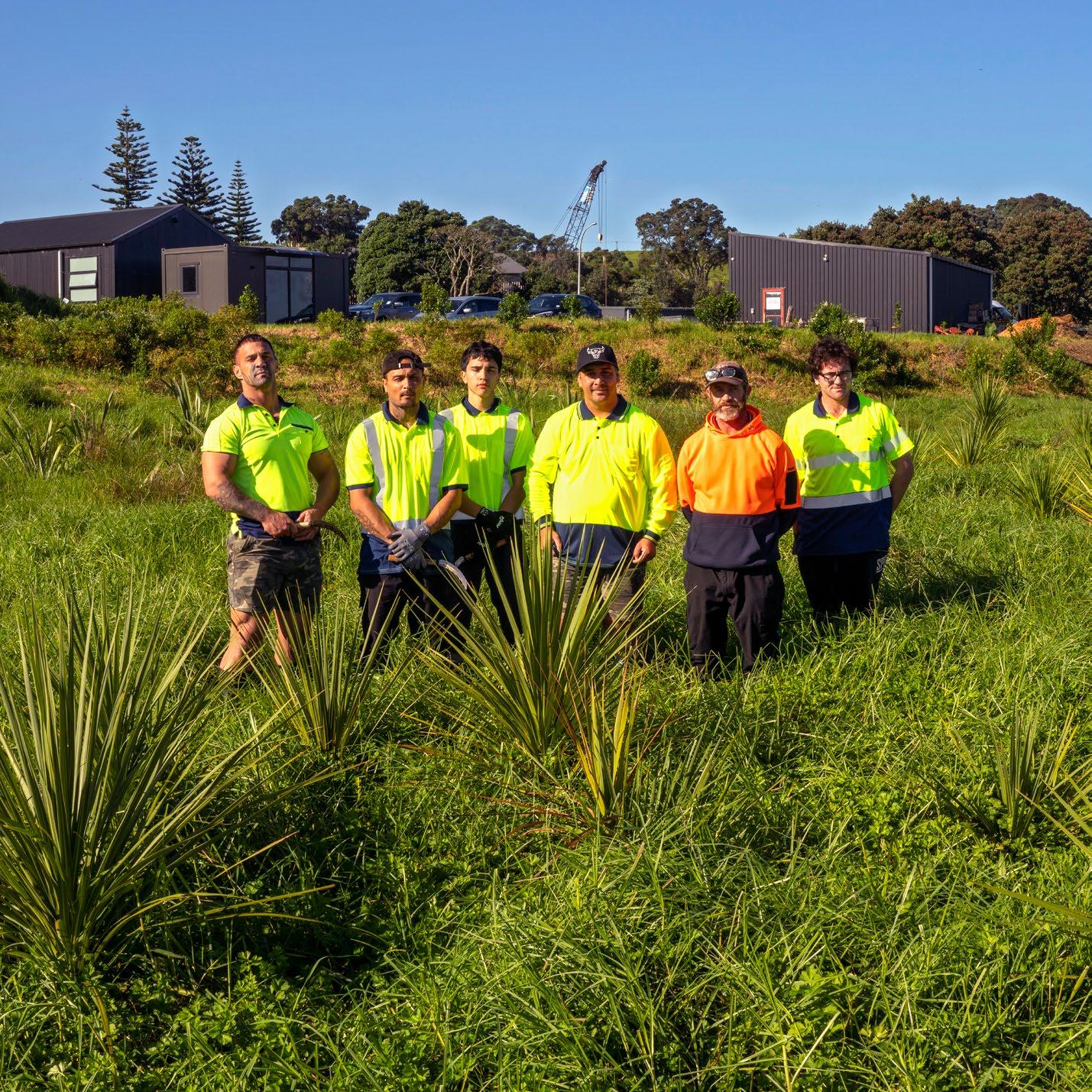
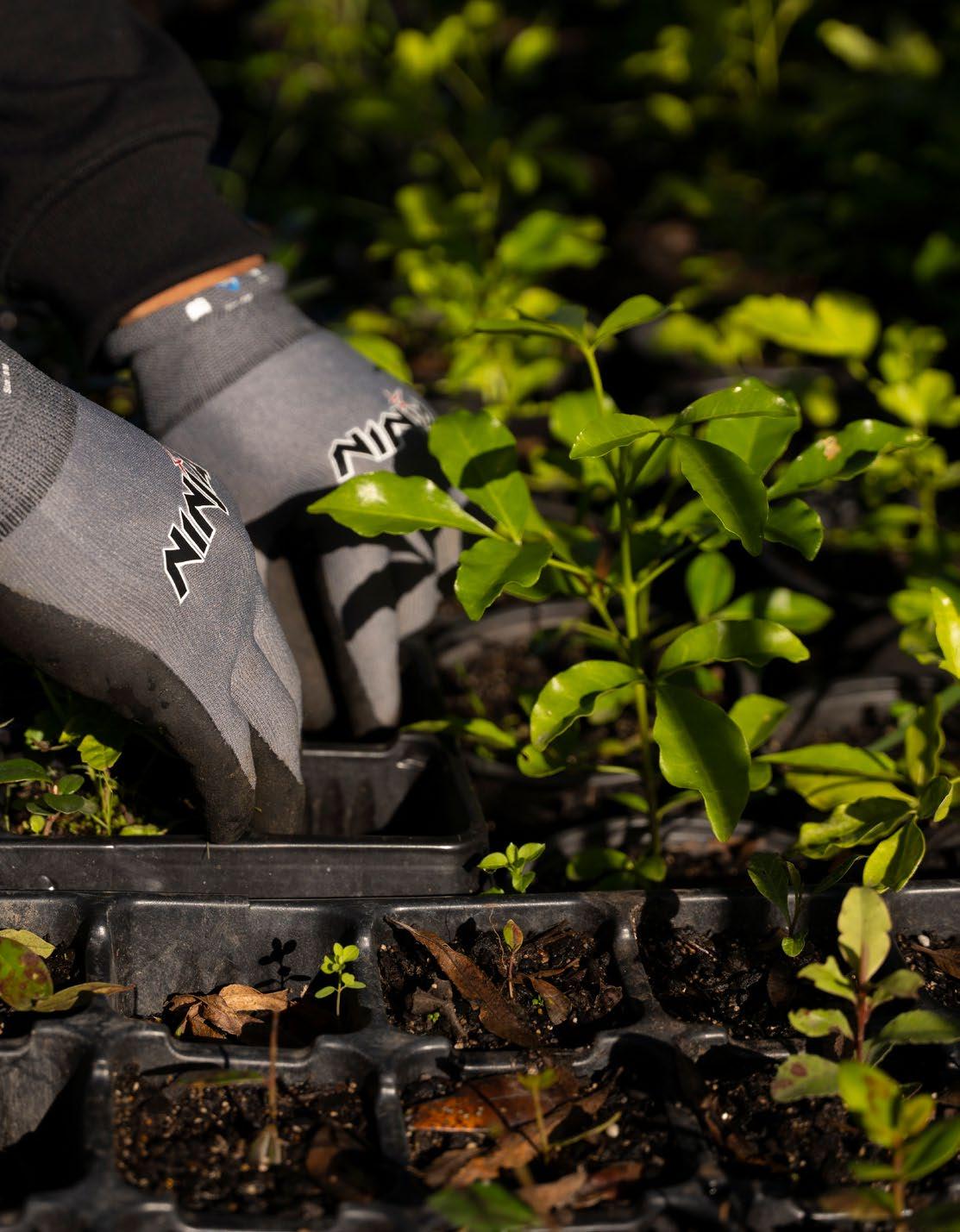

The Katere ki te Moana Marae received a make-over worthy of a reality TV show last year, thanks to a $265,000 grant from the Provincial Growth Fund.
The building was located on-site in the 1980s by Cousin Greg Skipper who purchased it and moved it all at his cost. This was his commitment to supporting whānau to be on the whenua. It had had some minor renovations but needed a total refit as it still sported its old-school scrim-lined walls and was leaky and cold. It was also hard to hold any gatherings of any size.
But now it has a totally revamped kitchen, newlygibbed walls, a new roof, new guttering, new windows, solar panels – and best of all, an expansive deck that has doubled the building’s footprint.
“It’s been amazing to see it transforming from a do-up former cricket clubhouse to a smart, welcoming, and fit-for-purpose marae,” says Ngamata Skipper, who oversaw the project. “The whole project was a bit of a whirlwind experience as we had limited time to get the work done, and many people contributed their time to it.”
“We relied heavily on our builders, Clelands, to make sure everything kept progressing and they were great.” The project was also an opportunity for Cleland’s site manager Hoani Russell (great-mokopuna of Ina Cole, and great-great-mokopuna of Te Hauwhenua (Mac) Kipa) to learn of his whānau connections to Katere and reconnect with whānau as the Hapū had photographs of his great-grandparents and other family members on display.
“Now we have a place that is ideal for smaller gatherings, family reunions, blessings, and the like,” says Ngamata. “The new deck is a wonderful space to hold presentations and ceremonies and to serve and enjoy the kai. And now it is all done up inside, it is a welcoming place for people to sleep over if needed.”
A variety of events and wānanga have already been held at the marae since the project was completed in February 2022, such as workforce training, finance management workshops, mokopapa and poi tawhito, and hosting a Minister of Parliament or two.
“Every hapū member who comes here can have a real feeling of pride in the appearance of their marae now,” says Ngamata. “Renovating the building is the first step of a long-held aspiration and is a testament to Greg’s vision of providing a space for whānau. It is wonderful to have achieved it so we can now enjoy our new surroundings as we move on to other improvements.”
Funding for the renovation of a marae, town halls, other community facilities, war memorials, and Pasifika churches was earmarked by the Government as part of the refocus of $600 million of Provincial Growth Fund funding.
The pūtea not only helped protect hundreds of valuable cultural and community assets around the country, but it also provided work for local contractors and Māori who were impacted by COVID-19.
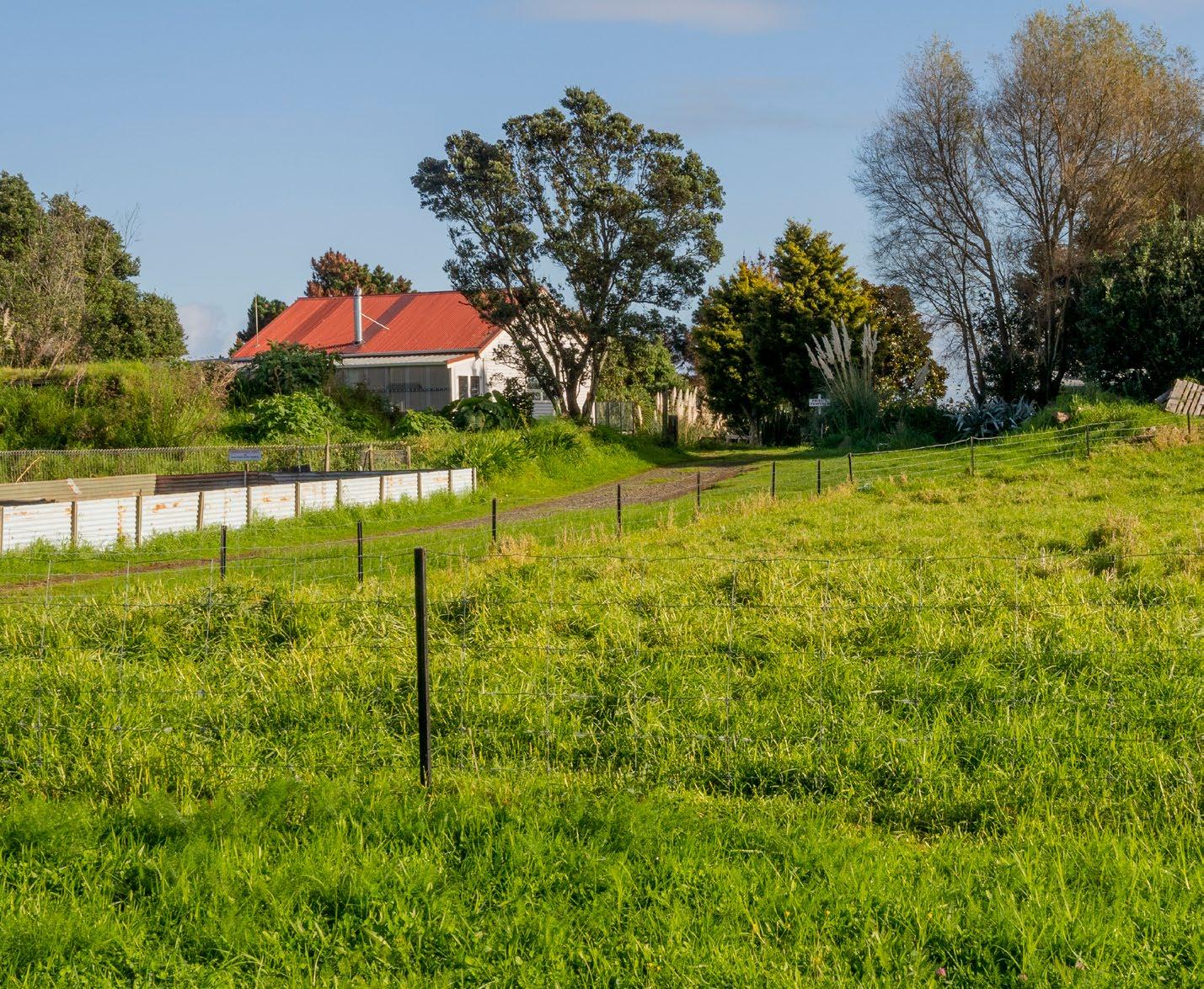

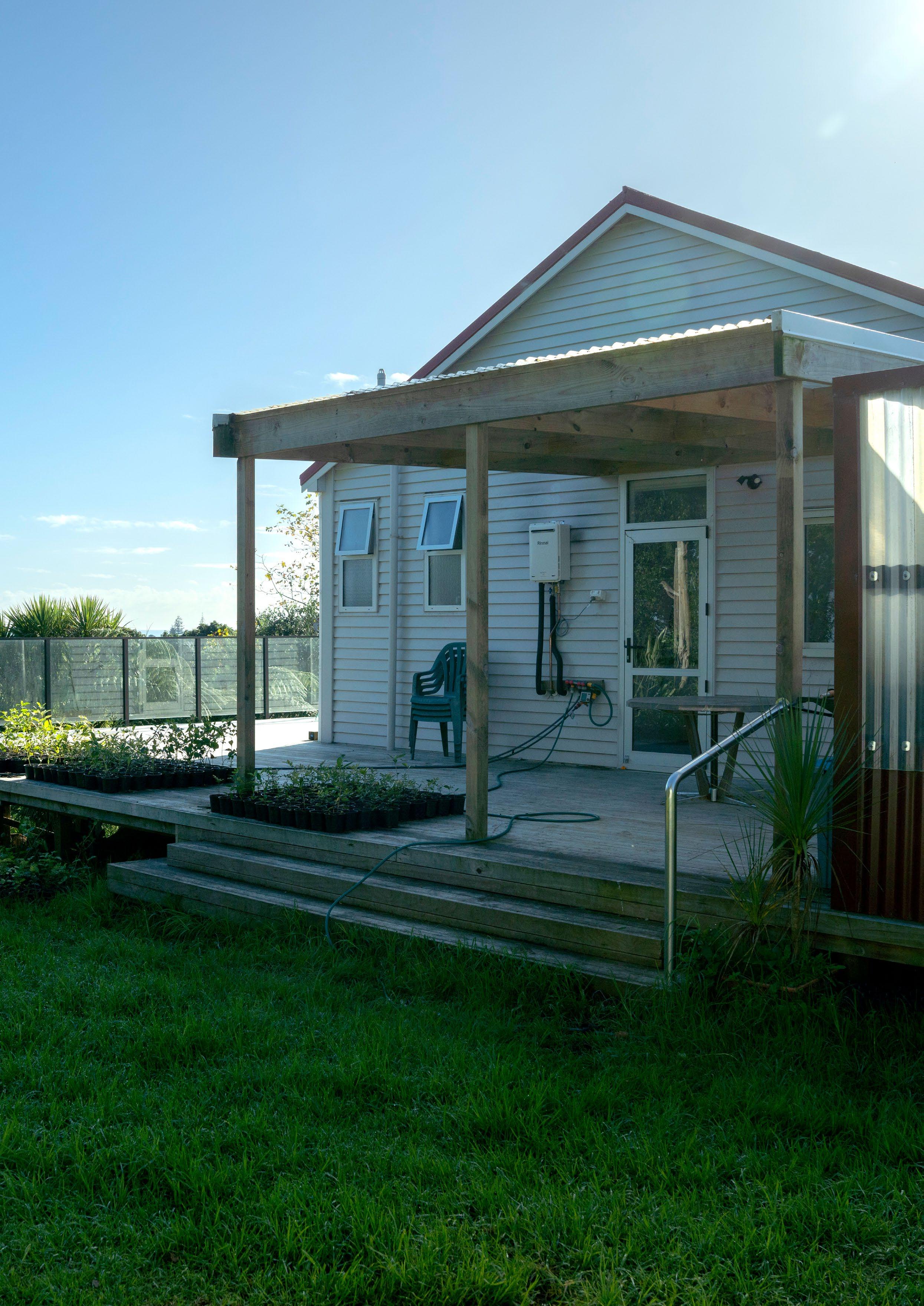
“The new deck is a wonderful space to hold presentations and ceremonies and to serve and enjoy the kai. And now it is all done up inside, it is a welcoming place for people to sleep over if needed.”
Ngamata Skipper
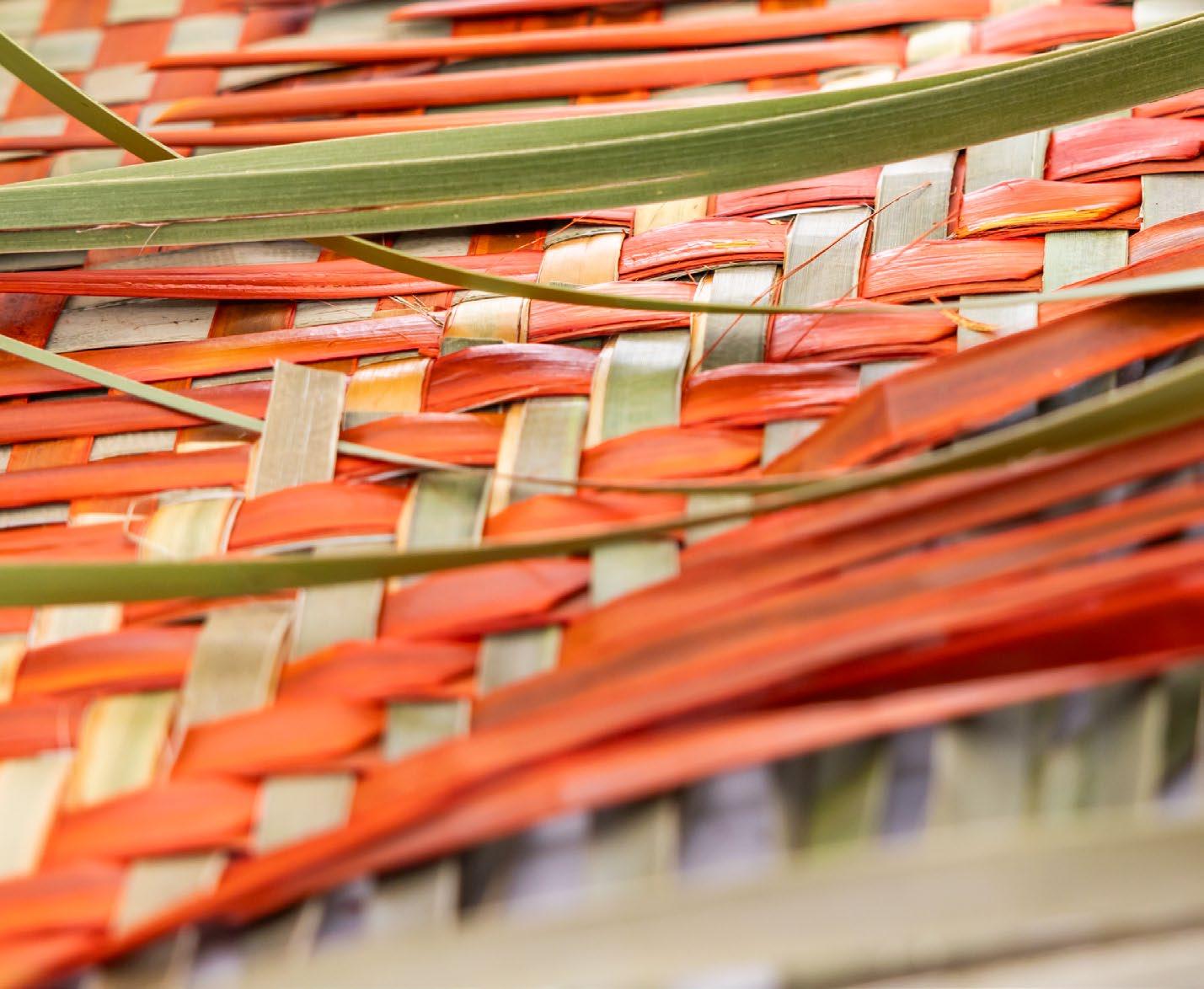

A series of Toi Wānanga allowed participants to learn and hone traditional skills such as raranga, tukutuku, and tāniko, as well as view a special exhibition of korowai and kākahu.
The workshops and exhibition took place at Katere ki te Moana Marae over three months from last October to February 2023 with around 80 people coming along to practise and build confidence in new-found skills. Classes were led by local artist and weaver Mako Jones, a friend of Tawhirikura Hapū, who shared her mātauranga, creating a supportive and welcoming atmosphere for participants.
“It was wonderful to see so many people come along to help keep our traditional weaving skills alive,” says Ngamata Skipper. “We had grandparents bringing their mokopuna, families coming to learn together and several men joining in too.”
“There were some more modern materials for tamariki to have a go [on] while the adults learned the traditional methods of each skill set.”
As well as the different weaving disciplines, there was also an opportunity to learn how to pelt a bird. This is the technique of removing the skin with the feathers still attached, so they can be kept ready for use on a cloak or other item of raranga. “By doing this, you can preserve how the feathers lie in relation to each other so they sit in the right way on your garment,” explains Ngamata.
To complete the Toi Wānanga, an exhibition showcasing the items made was held, which included the opportunity to get up close to traditional korowai and kakahū.
Kaitiaki Miria Pomare was the guest speaker, and she gave the whakapapa of the items and their relevance to Taranaki. This opportunity was not lost on the many weavers who attended.
A third element to proceedings was the presence of photographer Tania Niwa (Grand Master), who is helping to build a digital archive of Hapū activities to document its history for future generations.
“It was a very successful series of events, and we are grateful to Creative NZ for the funding to make it possible,” says Ngamata. “We will certainly be looking to provide wānanga in the future. We get so busy that we don’t take time out to play or be creative. Hanging out with whānau and building on our relationships with one another is key to whānau ora, hapū ora, and whenua ora.”
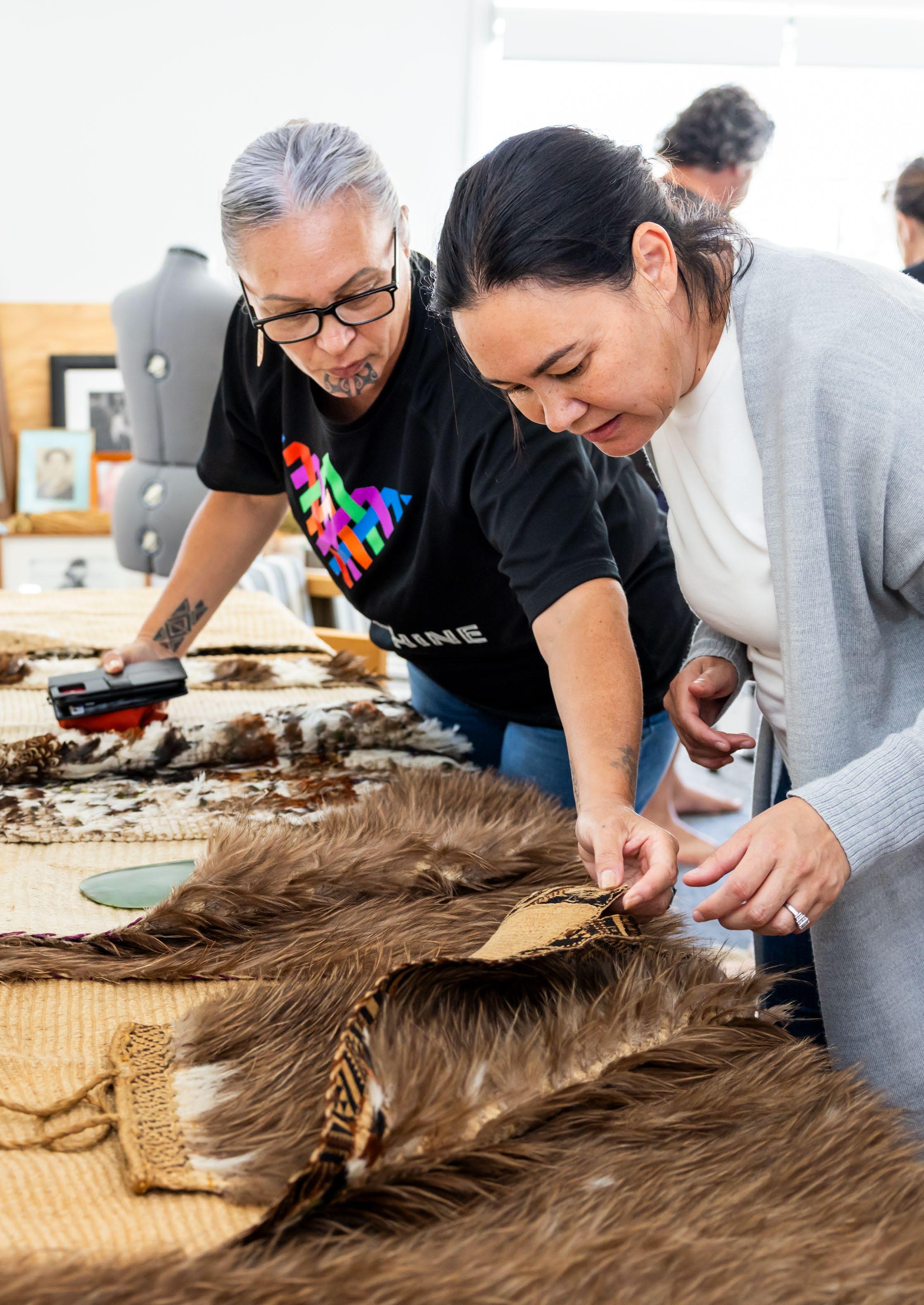
“We had grandparents bringing their mokopuna, families coming to learn together and several men joining in too.”
Ngamata Skipper
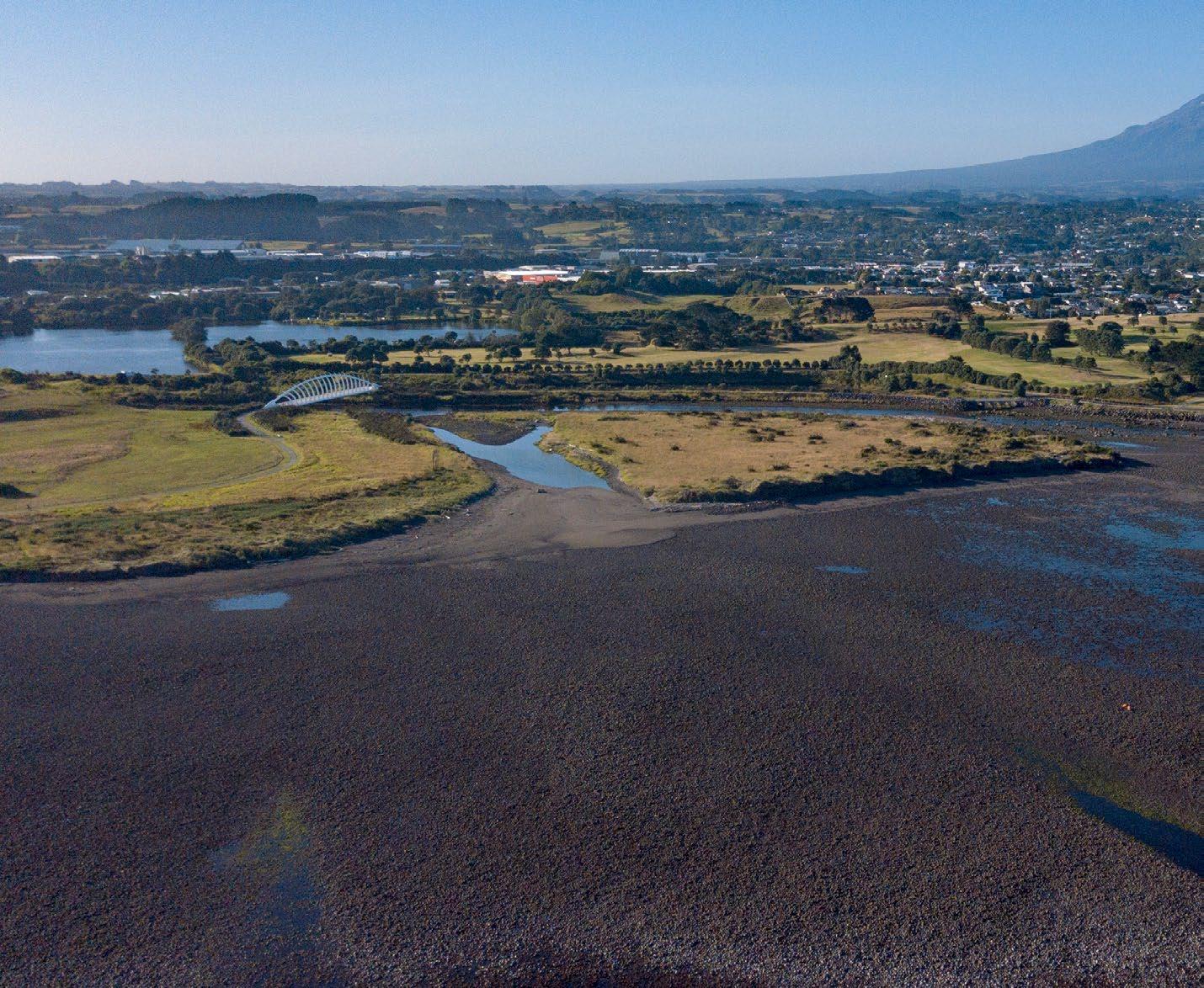

Mahi towards realising the aspirations for Hapū whenua near Te Rewa Rewa Pā is continuing to make progress as a draft master plan comes together.
“We are exploring what options are open to us as a Hapū that will deliver the largest benefit when measured against social, cultural, and economic parameters,” explains Sera Gibson, a member of the working group alongside Rangi Kipa and David Haskell.
“There are some exciting opportunities for us to look at and consider that will bring our people back to the Pā and whenua whilst ensuring its integrity is protected.”
With the Coastal Walkway running across the land, eco-tourism opportunities could be one option, with plenty of different ideas on the table to realise the potential of this whenua for Hapū.
“A papakāinga and arts and cultural hub could be a wonderful opportunity to bring life to the Pā and strengthen our cultural identity,” says Sera. “A visitor experience focusing on the Pā and the history of our people is another idea, with perhaps a hospitality element that would also service walkway users”.
“Commercial office space is another direction we could consider. We need to be sure that any decision is the right one, for the Hapū and the whenua, and so the working group is pulling together a draft master plan, or guiding document, before we hold wānanga to talk it all through.
“There is a lot of engagement and discussion that needs to happen before we will be able to make a decision.”
The 25 hectares of land on which the Pā stands has been subject to a joint management agreement with New Plymouth District Council since 2007. The council has provided funding worth $1.5m as part of the agreement, with $500k needing to be spent in the very near future.
“To take advantage of that funding, we are looking to put in some much-needed infrastructure such as fencing, accessway, car parking, and Hapū office relocation to support some of our employment initiatives over the next few months,” says Sera.
“This work is the first step in finding a sustainable and appropriate way to best use this land for the future benefit of our whānau now, and for future generations to come.”
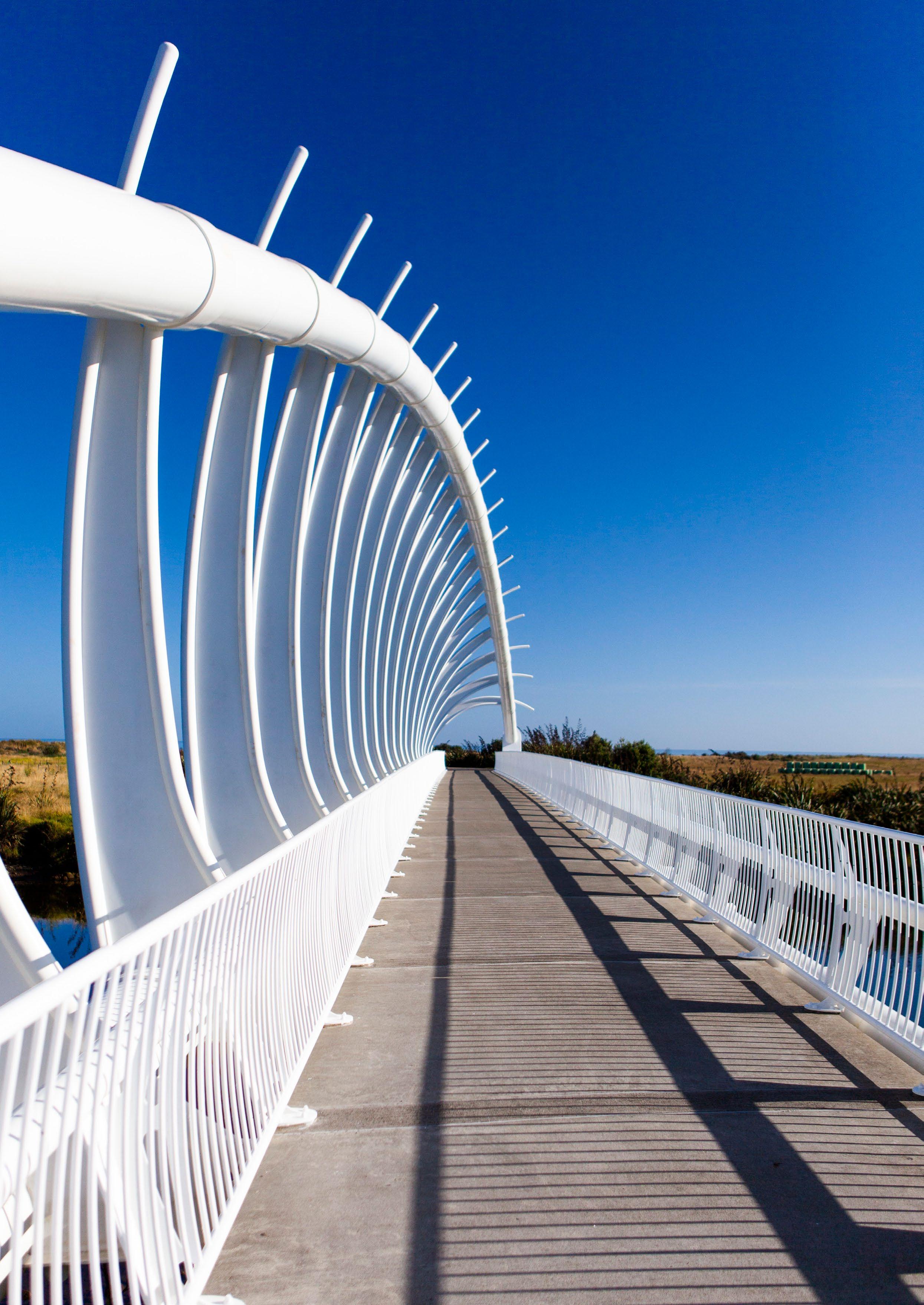
“A papakāinga and arts and cultural hub could be a wonderful opportunity to bring life to the Pā and strengthen our cultural identity.”
Sera Gibson
“The vision is to recreate the ecological corridor from the maunga to the ocean along each side of the awa,” says project lead Dylin Bailey. “A 50-metre buffer zone on each side of the bank with native planting that will encourage the return of our taonga species such as native manu, īnanga, tuna, kōura, and kanae fish in abundance, like times of old.”
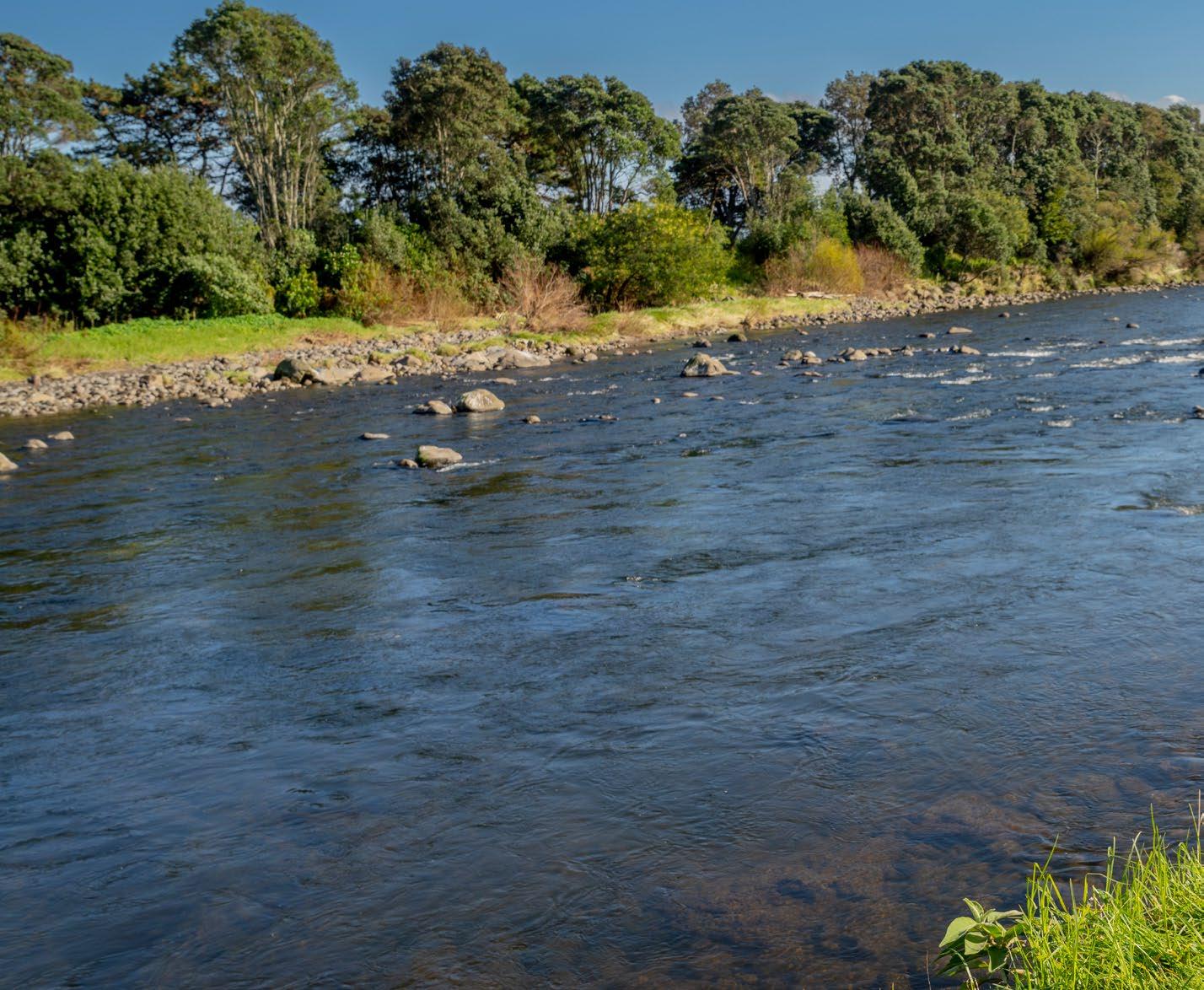

The team has already planted six sites with significance for the Hapū, with four more sites identified. Each site is assessed, and weeds are identified and eradicated before it is prepared for planting with natives. Then traplines are laid to catch rats, possums, stoats, mice, and hedgehogs as these pests have a huge impact on the native manu and taonga species.
The plants themselves come from the Hapū nursery presently located at Katere ki te Moana marae, where around 25,000 plants representing 30 different native species are propagated. There are plans to expand the nursery to more than 50,000 plants in the coming months.
The team consists of eight kaimahi, two of them permanent nurserymen, funded by the Department of Conservation’s Mahi mō te Taiao programme. Three of the team are rangatahi.
“It’s a fantastic opportunity to help create a pathway for connection for rangatahi and future generations,” says Dylin. “Sometimes our young people need to find
a sense of belonging, a sense of place, and when they find it, it can have a hugely positive effect on them and their whānau.”
“One of our young men found the school environment a hard one to thrive in and it was difficult for him to talk to people. Now he stands with pride and confidence reciting his pepeha and acknowledging his place in the world.”
The kaimahi undergo training and upskilling by completing courses in te reo, pest eradication, and trapping, horticulture and nursery skills, chainsaw and quad bike use, and health and safety.
Such is the positive impact on young people that the project is also involved in an initiative that builds relationships with school students so they can experience being out in nature, working to restore native environments.
“We currently have a group from Spotswood College that help out in the nursery,” says Dylin. “It’s great to give them the space and opportunity to reconnect with their awa, with the whenua, and discover their connection to te ao Māori through this mahi.”
“I am excited to see where we can go with this project – we currently have funding for three years, but the aim is to become self-sustaining with the nursery and provide plants for the entire Waiwakaiho catchment area.”
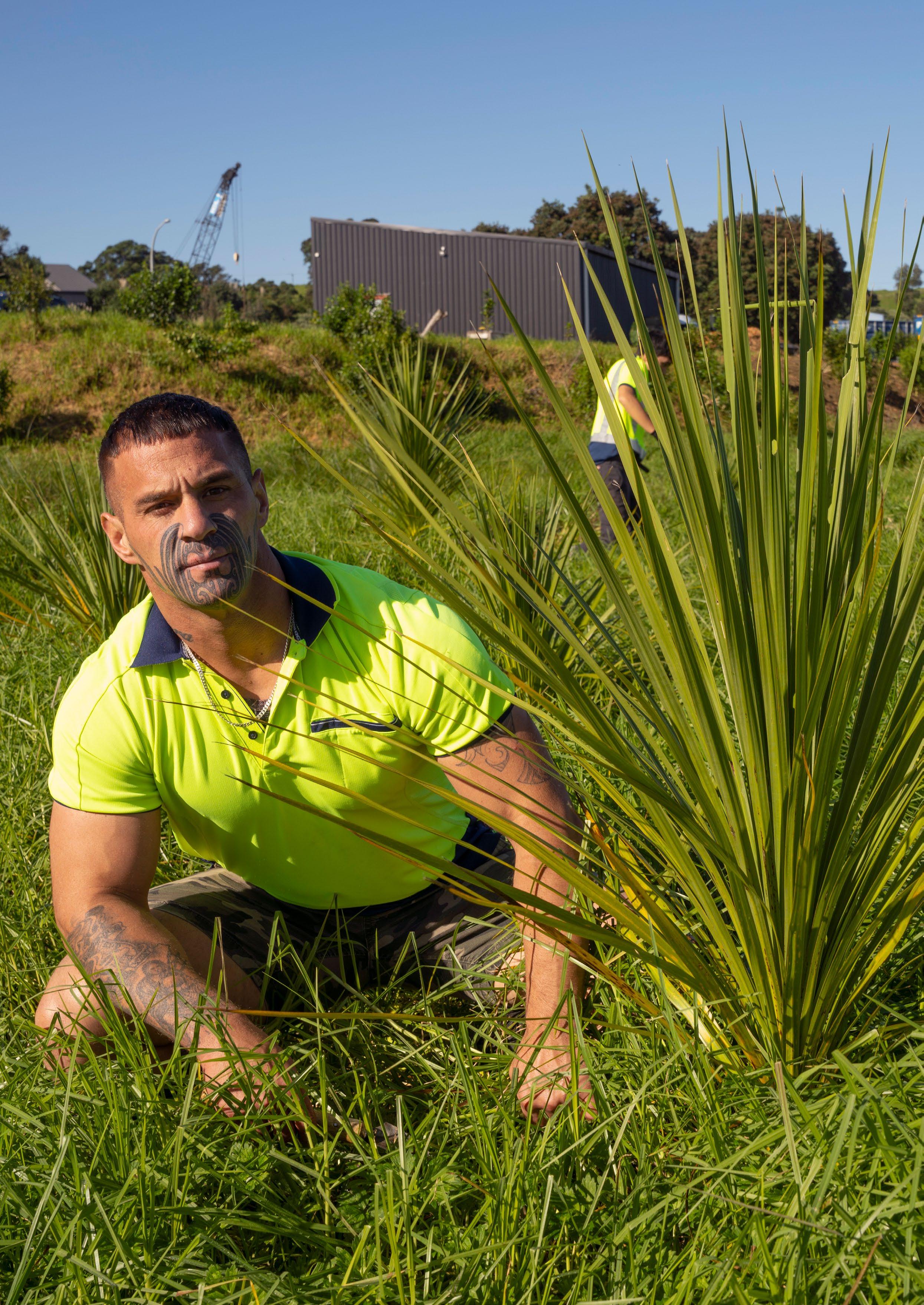
“The vision is to recreate the ecological corridor from the maunga to the ocean along each side of the awa.”
Dylin Bailey
The healing potential of connections between Māori and whenua is being explored in Tangata Whenua Tangata Ora: Investigating health gain through whenua initiatives
The five-year Health Research Council-funded programme is a collaboration between Whāriki Research Centre at Massey University and five sites across the motu.
Ngāti Tawhirikura Hapū is one of those telling their stories about hauora and whenua. Other sites involved are Te Rūnanga o Ngā Wairiki Ngāti Apa, Maungaharuru Tangitu hapū of Ahuriri, north of Napier in Heretaunga, Waitaiki in Te Wai Pounamu and Tū Tama Wahine o Taranaki in New Plymouth.
“There is an intrinsic need for Māori to have a connection with their ancestral whenua, to the mātauranga Māori, the knowledge of their iwi, their hāpu and whānau,” says Post Doctoral Fellow Ken Taiapa, a member of the research team based at the SHORE & Whariki Research Centre. “This research project aims to support and honour that connection –particularly where it was severed and is being restored - and the difference it makes for both the individual and the wider whānau.”
Ken has his connection to the Ngāti Tawhirikura Hapū, both through being a whāngai to the Watene Taungatara Waireinga whānau, and previous research into māra kai, which brought him into the community garden at Katere ki te Moana Marae.

“In 2016, I was part of a working-bee group organised by Glen Skipper visiting māra kai sites. Through conversations with Glen, and with the support of the Trust, it was agreed I would work with the hapū to tell
the story of Te Moeone Mārakai as my Ph.D. research,” he says. “I have a real interest in the health and wellbeing generated by Māori through kai production, the way harvesting is carried out sustainably, and the traditional knowledge that is handed down through the generations to support reconnections with the whenua.”
Ken is now working with the Hapū to support them to tell their stories and identify what they want to share more widely.
He says initiatives such as the Kaimahi 4 Nature programme, which is supporting the vision the Hāpu has of regenerating the banks of the Waiwakaiho awa, are providing entry points for Māori back to the whenua.
“We want to explore how initiatives can support the hauora of participants and the wider Māori community. In themselves, the environmental benefits are considerable, but the sense of well-being the connection with the whenua creates goes so much further.”
“We are proud as a Hapū to be involved in this valuable māhi,” says Bev Gibson, Trust Chair. “There is more we need to understand especially how essential access to our whenua and special places is for uri of Ngāti Tawhirikura and other whānau, and what more can be done to enable uri to reconnect to help their healing and their hauora.”
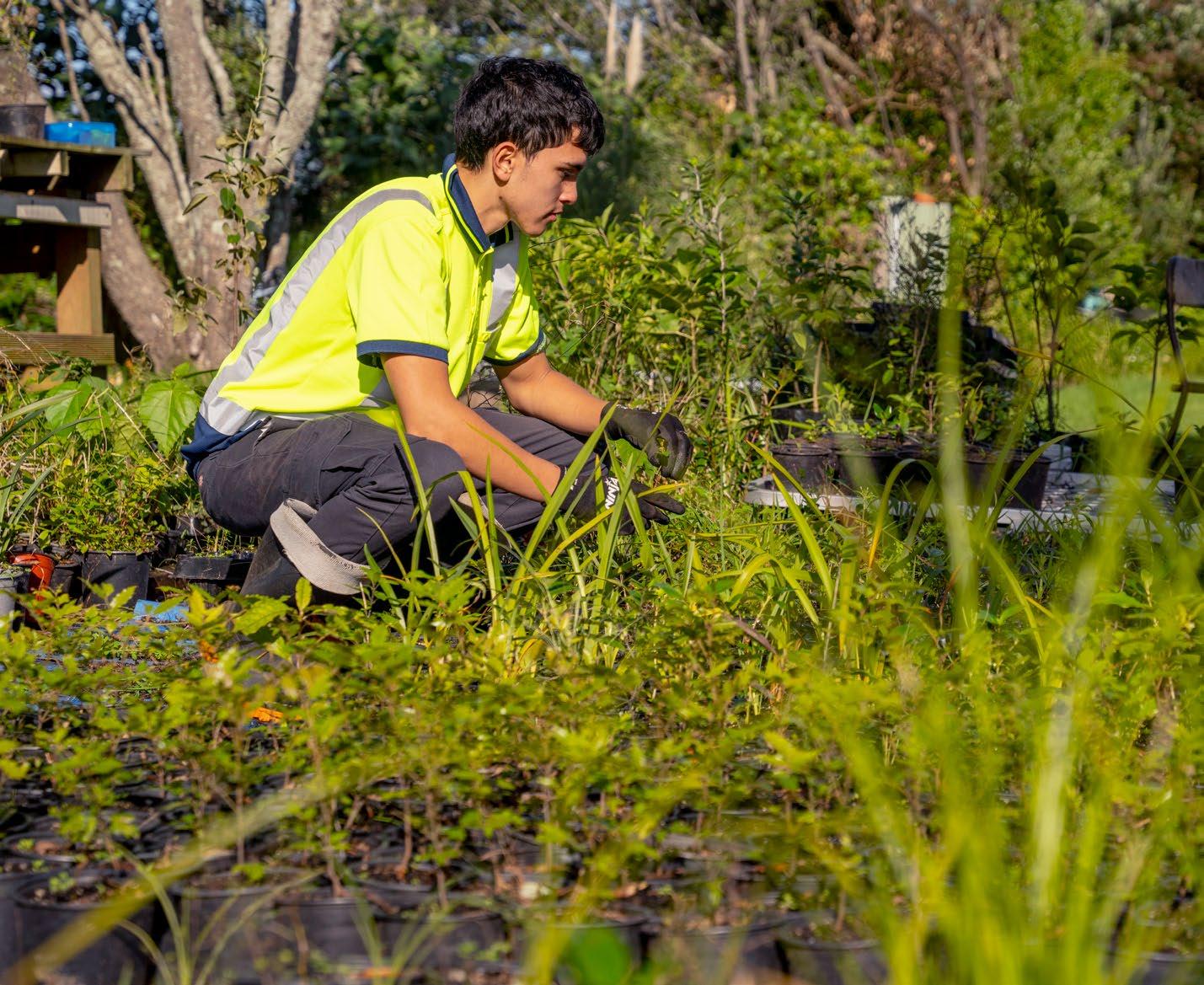
“There is an intrinsic need for Māori to have a connection with their ancestral whenua, to the mātauranga Māori, the knowledge of their iwi, their hāpu and whānau.”
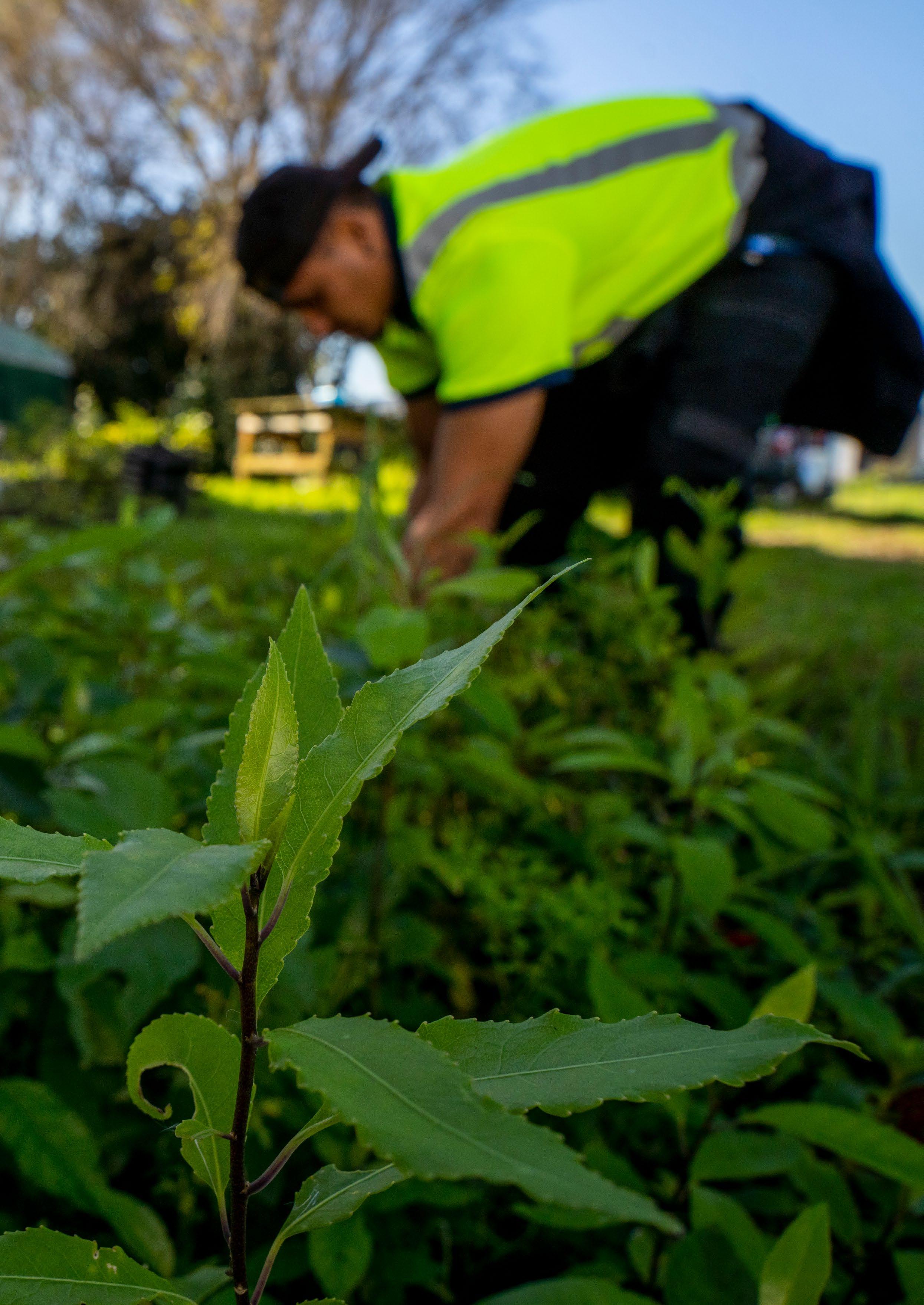 Ken Taiapa
Ken Taiapa
Bev is a mokopuna of Dave Ngāiwi Skipper (Te Atiawa) rāua ko Polly Whatumarara (Ngāruahine), he kōtiro a Mandy (née Skipper) rāua ko Ihaka Robinson. Bev recognises the importance of her Ngāti Tawhirikura Hapū links from Koro Mac and Kui Ngarere.
A chartered fellow of the Institute of Directors, Bev holds a diverse range of community governance roles in health, education, research, high-needs disability, and environmental restoration. A health auditor in clinical delivery and health management, Bev is a registered nurse and holds a Bachelor of Arts, a Postgraduate Diploma in Health Management, and a Master of Management degree.
Bev is honoured and privileged to be part of the Ngāti Tawhirikura Hapū story. Her vision for the Hapū Trust when she was appointed, which remains today, was for the hapū to be successful, to be the hapū of choice to work with, and for all uri to feel proud to be of Ngāti Tawhirikura descent.
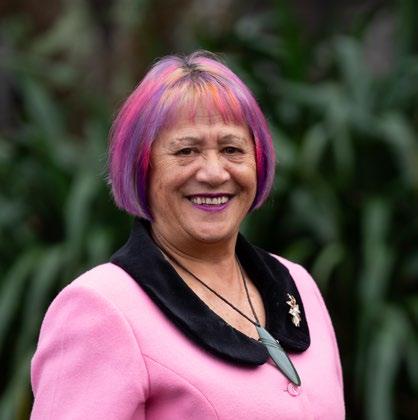
As a Community Development Coordinator, David led projects for Te Ara Whakamua o Whaitara aimed at supporting and empowering the people of Waitara to create a stronger and more connected community.

With 18 years in the radio industry, David has refined his skills as a clear communicator and works hard at forging productive relationships.
David was educated at Waitara High School. He has experience in Business and Property ownership and creating Social Enterprises.
David is the son of Frank and (Molly) Hine Marokura Haskell née Te Hana Tū, daughter of Charles Wira Te Hana Tū and (Sissy) Kathleen Te Hana Tū née Skipper, daughter of Neha and Ngarere Kipa. He is married to Cath and has two adult children and two mokopuna. His passions are his whānau, surfing, and friends. David is in his third year as a Trustee for the Ngāti Tawhirikura Hapū Trust.
As a nurse and a midwife, Sharron has been a passionate champion for the health of our Māori māmā, pēpē, and the wider Taranaki community for more than 20 years.
Currently working as a Tamariki Ora/Well Child nurse, and completing a Postgraduate Certificate in Primary Health, she was instrumental in establishing Hapū Wānanga Taranaki in 2018 and was also a facilitator of the kaupapa Māori birthing and education class.

Sharron is involved in a range of activities such as te reo Māori (Te Wānanga o Raukawa), raranga, and rongoā, and brings her life experience and leadership skills to nurture and advocate for the future aspirations of Ngāti Tawhirikura uri and help build strong resilient whānau within Ngāti Tawhirikura Hapū.

Sharron is the kotiro of Rita Te Wharemawai Tapuke.
Tracy has been a trustee for Ngāti Tawhirkura Hapū since 2019 and has learned a lot about governance during that time.
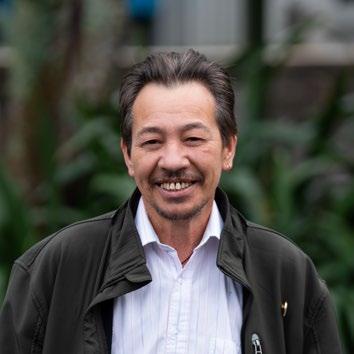

Tracy has qualifications, experience and skills in the hospitality and education industry. She is presently a kaiāwhina for Te Ahu o Te Reo Māori ki te Taiuru, revitalising and tutoring teachers in te reo Māori. She is also presently employed at He Kākano Ririki (Little Seeds) Early Learning Centre in Waitara as a fully registered early childhood teacher and takes care of children including those tamariki with special needs.
Whanaungatanga, manaakitanga, te reo Māori me ōna tikanga, values, morals, and skills came from everyday living, traveling to the marae, and visiting whānau across the motu with her parents (Ronald Wipiti & Jacqueline Arnold) and grandparents (Norman Wipiti & Rita Wipiti née Tapuke). Rita is the daughter of Retimana Tapuke and Te Ohorere Hineone Skipper, who was the sixth child of Neha and Ngarere Kipa.
Tracy has seven children (4 girls & 3 boys) with partner Degan Tamati.
SIMON CAYLEY INDEPENDENT TRUSTEE
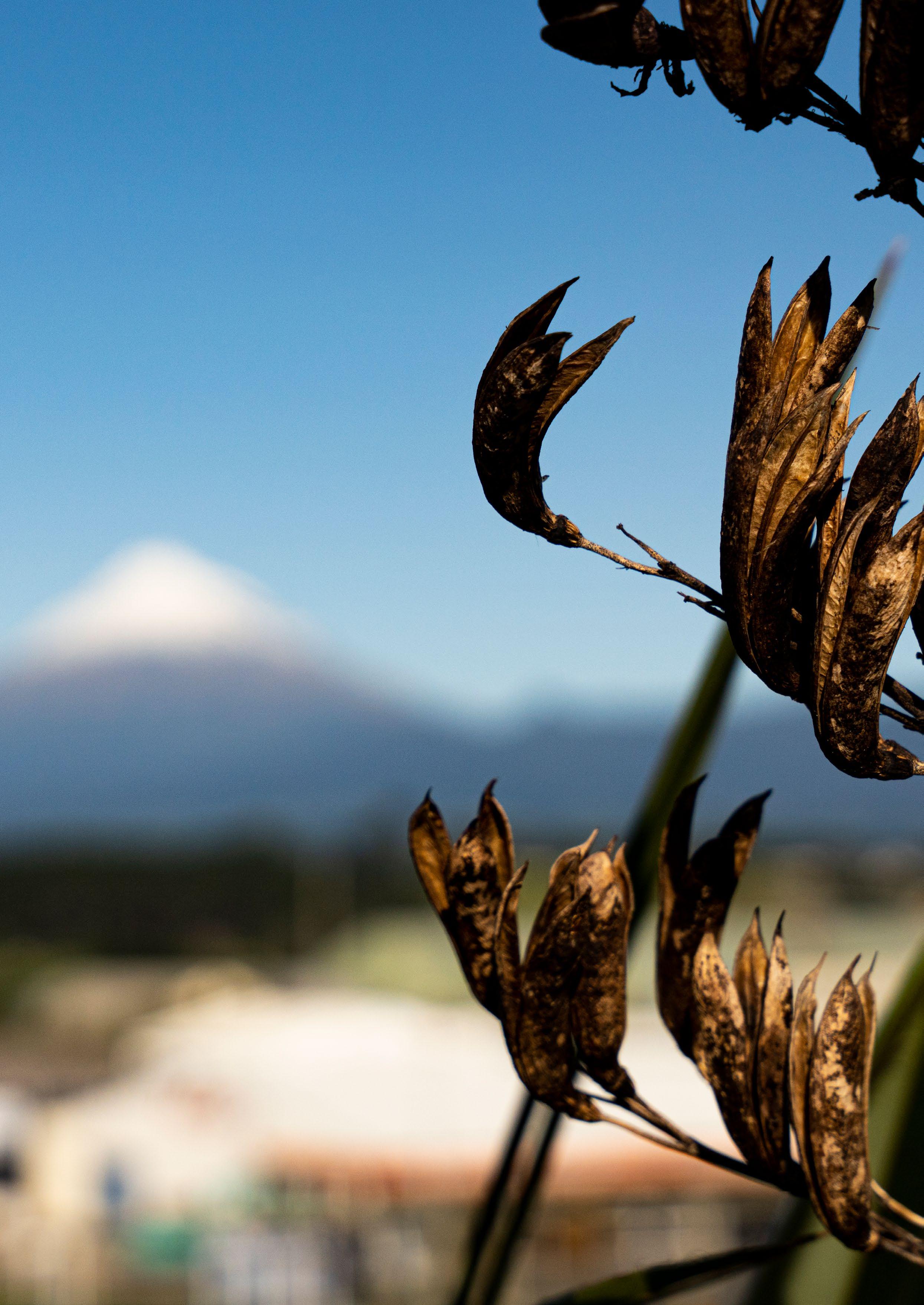
As at 31 March 2023 NGĀTI TAWHIRIKURA HAPŪ CHARITABLE TRUST
TARANAKI
Entity Information
As at 31 March 2023
Legal Name
Ngāti Tawhirikura Hapū Charitable Trust
Entity Type Charitable Trust
Entity's Purpose or Mission
The purpose of the Trust will be to have a presence, an influencer and create positive change in our community through the development of Ngāti Tawhirikura Hapū.
Ngāti Tawhirikura Hapū Charitable Trust is governed by a Board of Trustees comprising up to five members. Trustees are;
Bev Gibson
David Haskell
Tracy Wipiti
Sharron Wipiti
Main Sources of Cash and Resources
Main Methods Used to Raise Funds
Entity's Reliance on Volunteers and Donated Goods or Services
Entity Structure Address
The Trust received income from a mixture of governancy agency grants and consultation charged.
Fees are charged for consultation services provided and grants received for specific projects.
The Trustees are all volunteers and they are supported in delivering the objectives of the Trust by volunteers from the Hapu.
PO Box 3330 Fitzroy New Plymouth 4341
finance@tawhirikura.org
Email Address Accountants Graham Brown & Co Ltd Chartered Accountants
PO Box 204 Putaruru 3443
Registered Charity Number CC57070
GRAHAM BROWN & CO LTD Chartered Accountants
NGĀTI TAWHIRIKURA HAPŪ CHARITABLE TRUST
For the year ended 31 March 2023
TARANAKI
Approval of Performance Report
For the Year Ended 31 March 2023
The Trustees are pleased to present the approved Performance Report of NGĀTI TAWHIRIKURA HAPŪ CHARITABLE TRUST for the year ended 31 March 2023.
For and on behalf of the Trustees
19/07/2023
19/07/2023
These financial statements are to be read in conjunction with the accompanying Notes and the Audit Report. These statements have been audited.
For the year ended 31 March 2023
TARANAKI
Statement of Service Performance
For the Year Ended 31 March 2023
Description of Entity's Outcomes
OUTCOME 1: Retelling the Stories of Ngāti Tawhirikura Hapū – ACHIEVED.
Hapū submitted stories about Ngāti Tawhirikura:
2021/2022 - for projects concerning Te Rewa Rewa (NPDC), Waiwhakaiho restoration project (DoC & Project Crimson). 2022/2023 – for projects concerning TrustPower & Smart Road Urban Development.
OUTCOME 2: Supporting the Uri o Ngāti Tawhirikura Hapū – ACHIEVED.
Governance training
1. 2021/2022 – governance training delivered by Tarina MacDonald and included members from other Hapū’s.
2.Two uri were elected to the Ngāti Tawhirikura Hapū Trust and joined two previous Trustees on 16 October 2022. New Trustees attended governance training - Bev Gibson (Fellow of the Institute of Directors) attended IOD training for her continuous professional development (CPD) in October & November 2022. Sharron Wipiti attended the Wheelhouse training at Mahia Mai A Whai Tara in December 2022.
3.A new Trustee induction programme was developed and implemented in October 2022.
1.Attendees sheet.
2.PD for nursing registration (Bev Gibson).
3.Wheelhouse Certificate (Sharron Wipiti).
# meetings Boardpro
1. Monthly meetings held from November 2022 – March 2023 are consistent, recorded, and signed by the Chair.
2. Leads of Hapū projects submit a monthly report. Attend Trust meetings to respond to any questions from the Trustees.
3. All decisions are approved by consensus. If not, and there is a majority for the motion, a record of who dissented is recorded in the minutes. Key stakeholder
Reserve, Treasury.
Laptop, Motor Vehicle
Resource Disciplinary Hui, Learning & Development Policy & Procedure (P&P), Pay, Privacy Practices, Recruitment P&P, Safe Driving P&P, Standards of Behaviour, Time Off P&P, Whakaute P&P
& Safety Manual Designed to accommodate H&S practices for the Hapū.
# hui held An internal hui of 20 attendees. Filed
# Uri
The Trust has formulated a list that shows to date 198 uri are registered to Ngāti Tawhirikura Hapū. More names are yet to be added to the list. The Trust is in the process of reviving the Uri Registration Roopu to receive new registrations. Acknowledgment and acceptance of registration letters have been designed in preparation for new uri registrations.
These financial statements are to be read in conjunction with the accompanying Notes and the Audit Report. These statements have been audited. Page 4
These financial statements are to be read in conjunction with the accompanying Notes and the Audit Report. These statements have been audited.
For the year ended 31 March 2023
TARANAKI
Statement of Service Performance
For the Year Ended 31 March 2023
OUTCOME 3: Relieve poverty by providing support for uri and the community in charitable need - UNACHIEVED.
OUTCOME 4: Cultural and social development beneficial for uri, the Hapū, and the community -
# Te Taiao kaimahi training. 2021/2022 Training - Chainsaw competency (x7), heke kaitiakitanga Putaiao
Wananga o Raukawa (x1), Te Reo (x1)
2022/2023 Training – graduated in pest management, upskilling in pest ID, pest eradication, Light Utility Vehicle (LUV), and quad bike competency (x3), graduated in te reo -Te Wānanga o Aotearoa Level4 (x2), graduated in Heke Kaitiakitanga Pūtaiao - Te Wananga o Raukawa (x1), graduated in the Mauri Compass Matauranga Māori Monitoring tool. This course is delivered by the Ruru whānau from Tauranga ki te Moana). The Mauri Compass Tool is designed to assess the quality and health of the awa/wai/whenua and taiao space. All kaimahi that graduated are now trained assessors (x7).
# Mahingakai sites
2021/2022- Mahingakai (MHK) #1 – Te Rewa Rewa, MHK #2 – Te Pou Tutaki, MHK #3 - Rimu Street.
2022/2023- MHK #1 – Puke weka/Te Rewa Rewa Island, MHK #2 –Te Ngaere (Merrilands Domain), MHK #3b – Kapurau, #4 Kaipi BEgmont village. Infill planting continuously over the spring season.
Doc
# Nursery plants are grown.
# of indigenous rakau planted.
# Contracts for Service 2021-2022 – Department of Conservation and Project Crimson Trust.
2022-2023 – Same As Above.
Doc Reports 11500 14470
These
01
TE TAIAO/KAIMAHI FOR NATURE – “Ka whakaaraara te tangata, ka whakaora te wai, ka whakahokia te taonga”.Tawhirikura Hapū Trust Annual Report 2023 27
For the year ended 31 March 2023
TARANAKI
For the Year Ended 31 March 2023
SIGNIFICANT SITES OF INTEREST TO HAPŪ.
OUTPUTS:
Cody Place2021/2022 – Meetings attended by Trustee.
2022/2023 - Meetings held with Te Kotahitanga o Te Atiawa (TKOTA). The Trust, with advice from TKOTA, is working alongside Govett Quilliam to set up a ‘holding’ company for assets such as Cody Place and like for the Hapū. The Trust is not the vehicle for related assets of this value. Work in progress.
Colson Road2021/2022 – one onsite meeting, and NPDC office meetings. Minutes
2022/2023 - Meetings were held with NPDC to establish a nursery on the whenua. Presently, the nursery is at Katere ki te Moana, however, space is now limited at the Pa. It is also appropriate to return Katere ki te Moana to being a Marae reserve.
Fitzroy Golf Club2021/2022 – meetings held at the NPDC office. Minutes
2022/2023 - The Fitzroy Golf Club (FGC) lease expires in June 2023. The meeting between NPDC, FGC, Ngāti Tawhirikura Hapū, and Ngāti Te Whiti is in progress to look at an MoU between the parties.
2021/2022 - Re-development completed. An article about this Ngāti Tawhirikura Hapū project is in the 2022/2023 Annual Report.
A contract was signed in 2021 between AgResearch and Ngāti Tawhirikura Hapū Trust. After almost 12 months of numerous efforts to put in place accountability systems with project service providers, this contract and the remaining funds were returned to the funder, AgResearch. This project is not a Hapū venture.
Te Rewa Rewa
2021/2022 – NPDC and Ngāti Tawhirikura Hapū project team meeting regularly to progress the master plan for Te Rewa Rewa.
2022/2023 – Progress continues with the Te Rewa Rewa plan. An article about this Ngāti Tawhirikura Hapū project is in the 2022/2023 Annual Report.
20221/2023 - Funding from CreativeNZ contributed towards costs of continuing the promotion of Toi Whakairo delivering training to the trade training tauira Maori December-January 2021. The supported funding provided by Creative NZ enabled the Hapū to engage this taonga matauranga o whakairo for an age group of tauira who will walk into their futures not only taking them foundation knowledge and skills of trade but also of whakairo with them and theirs of tomorrow.
Mauri Compass Training As per the Te Taiao report.
financial statements are to be read in conjunction with the accompanying Notes and the Audit Report. These statements have been audited. Page 6
financial statements are to be read in conjunction with the accompanying Notes and the Audit Report. These statements have been audited.
For the year ended 31 March 2023
For the year ended 31 March 2023
NGĀTI TAWHIRIKURA HAPŪ CHARITABLE TRUST TARANAKI
NGĀTI TAWHIRIKURA HAPŪ CHARITABLE TRUST
For the year ended 31 March 2023
TARANAKI
Notes to and forming part of the Performance Report
For the Year Ended 31 March 2023
1Statement
NGATI TAWHIRIKURA HAPU CHARITABLE TRUST is a Charitable Trust registered under the Charities Act 2005.
NGATI TAWHIRIKURA HAPU CHARITABLE TRUST is eligible to apply Tier 3 PBE Accounting Requirements : PBE SFR-A (NFP) Public Benefit Entity Simple Format Reporting -Accrual (Not-For-Profit), on the basis that it does not have public accountability and has total annual expenses of equal to or less than $2,000,000. The trust has elected to report in accordance with PBE SFR-A (NFP). All transactions in the Performance Report are reported using the accrual basis of accounting.
The accounting principles recognised as appropriate for the measurement and reporting of the Statement of Financial Performance and Statement of Financial Position on a historical cost basis are followed by the trust, unless otherwise stated in the SpecificAccounting Policies.
The information is presented in New Zealand dollars. All values are rounded to the nearest $.
The Performance Report is prepared under the assumption that the entity will continue to operate in the foreseeable future.
The following specific accounting policies which materially affect the measurement of the Statement of Financial Performance and Statement of Financial Position have been applied:
Revenue is measured at the fair value of the consideration received or receivable for the sale of goods and services, to the extent it is probable that the economic benefits will flow to the trust and revenue can be reliably measured.
Interest received is recognised as interest accrues.
Fundraising and Grant income is accounted for depending on whether or not it has a "use or return" condition attached. Where no use or return conditions are attached, the revenue is recorded as income when the cash is received. Where income includes a use or return condition, it is initially recorded as a liability on receipt. The income is then subsequently recognised in the Statement ofFinancial Performance as the performance conditions are met.
Expenses have been classified by their business function.
Cash and cash equivalents comprise cash on hand and demand deposits, together with other short-term, highly liquid investments that are readily convertible into known amounts of cash and which are subject to an insignificant risk of changes in value.
Trade Receivables are recognised at estimated realisable value.
These financial statements are to be read in conjunction with the accompanying Notes and the Audit Report. These statements have been audited.
Page 10
GRAHAM BROWN & CO LTD
These financial statements are to be read in conjunction with the accompanying Notes and the Audit Report. These statements have been audited.
NGĀTI TAWHIRIKURA HAPŪ CHARITABLE TRUST
For the year ended 31 March 2023
TARANAKI
Notes to and forming part of the Performance Report (continued)
For the Year Ended 31 March 2023
(e)Property, Plant & Equipment
Property, Plant and Equipment are stated at historical cost less any accumulated depreciation and impairment losses.
Historical cost includes expenditure directly attributable to the acquisition of assets, and includes cost of replacements that are eligible for capitalisation when these incurred.
Depreciation is calculated on a diminishing value basis over the estimated useful life of the asset. The following estimated depreciation rates have been used:
Land freehold 0% DV
2%-10% DV Furniture and fittings 10% DV
Vehicles 40% DV
equipment 50%-67% DV
& equipment 25%-50% DV
An item of Property, Plant & Equipment or investment property is derecognised upon disposal or when no further future economic benefits are expected from its use or disposal. Any gain or loss arising on derecognition of the asset (calculated as the difference between the net disposal proceeds and the carrying amount of the asset) is included in the Statement of Financial Performanceinthe year the asset is derecognised.
(f)Income Tax
Ngati Tawhirikura Hapu Charitable Trust as a registered tax charity is exempt from income tax under section CW42(1) of the Income Tax Act 2007.
(g)Goods and Services Taxation (GST)
Revenue and expenses have been recognised in the performance report exclusive of GST. All items in the Statement of Financial Position are stated exclusive of GST except for receivables and payables which are stated inclusive of GST. The trust is registered for GST.
There have been no changes in accounting policies. All policies have been applied on a basis consistent with those from previous performance report.
These financial statements are to be read in conjunction with the accompanying Notes and the Audit Report. These statements have been audited.
These financial statements are to be read in conjunction with the accompanying Notes and the Audit Report. These statements have been audited.
For the year ended 31 March 2023
TARANAKI
Notes to and forming part of the Performance Report (continued)
For the Year Ended 31 March 2023
These financial statements are to be read in conjunction with the accompanying Notes and the Audit Report. These statements have been audited. Page 13
These financial statements are to be read in conjunction with the accompanying Notes and the Audit Report. These statements have been audited.
BROWN & CO LTD Chartered Accountants
For the year ended 31 March 2023
TARANAKI
Notes to and forming part of the Performance Report (continued)
During the year Ngati Tawhirikura Hapu Charitable Trust managed the redevelopment fund from Ministry of Business, innovation and Employment on behalf of Katere Marae.
These financial statements are to be read in conjunction with the accompanying Notes and the Audit Report. These statements have been audited. Page 14
These financial statements are to be read in conjunction with the accompanying Notes and the Audit Report. These statements have been audited.
TARANAKI
For the year ended 31 March 2023
Notes to and forming part of the Performance Report (continued)
For the Year Ended 31 March 2023
Grants in Advance relates to the grants listed below which have not been fully utilised in the 2023 financial year but which have sufficient conditions attached that would require unspent funds to be returned to the funders.
Funder / Purpose
Department of Conservation - Kaimahi for Nature
Fonterra - Mauri Compass
Shore & Whariki Research Centre - Tangata Whenua, Tangata Ora Research
TOI Foundation - Te Kahui Rau
2022: Funder / Purpose
Massey University / Shore & Whariki Research
Creative NZ - Wananga
Department of Conservation - Kaimahi for Nature
Lotteries Communities (DIA) / NTWK - Capacity
Lotteries Communities (DIA) / Rangatahi Roopu
These financial statements are to be read in conjunction with the accompanying Notes and the Audit Report. These statements have been audited. Page 15
GRAHAM BROWN & CO
These financial statements are to be read in conjunction with the accompanying Notes and the Audit Report. These statements have been audited.
For the year ended 31 March 2023
TARANAKI
Notes to and forming part of the Performance Report (continued)
For the Year Ended 31 March 2023
The trust has no contingent liabilities and no guarantees as at 31 March 2023. (2022: Contingent Liabilities Nil. Guarantees Nil.)
These financial statements are to be read in conjunction with the accompanying Notes and the Audit Report. These statements have been audited.
Page 16
GRAHAM BROWN & CO LTD
These financial statements are to be read in conjunction with the accompanying Notes and the Audit Report. These statements have been audited.
Chartered Accountants
NGĀTI TAWHIRIKURA HAPŪ CHARITABLE TRUST
For the year ended 31 March 2023
TARANAKI
Notes to and forming part of the Performance Report (continued)
For the Year Ended 31 March 2023
17Events Occurring After Balance Date
Te Kotahitanga o Te Atiawa has purchased the block of land in front of the Hapu site for $500,000 with the intention that this is returned to Ngati Tawhirikura. At balance date Te Kotahitanga o Te Atiawa is determining whether this will be gifted or form part of any future distributions to Ngati Tawhirikura Hapu.
For the year ended 31 March 2023
These financial statements are to be read in conjunction with the accompanying Notes and the Audit Report. These statements have been audited.
To the Trustees of Ngāti Tawhirikura Hapū Charitable Trust Report on
Opinion
We have audited the performance report of Ngāti Tawhirikura Hapū Charitable Trust on pages 29 to 41, which comprise the statement of financial position as at 31 March 2023, and the statement of financial performance and statement of cash flows for the year then ended, and notes to the financial statements, including a summary of significant accounting policies.

Qualified Opinion
In our opinion, except for the possible effects of the matter described in the Basis for Qualified Opinion paragraph the accompanying performance report presents fairly, in all material respects, the financial position of the Ngāti Tawhirikura Hapū Charitable Trust as at 31 March 2023, and its financial performance and its cash flows for the year then ended in accordance with Public Benefit Entity Simple Format Reporting – Accrual (Not-For-Profit).
Basis for Qualified Opinion
The Trust has included $486,977.00 of contract wages in volunteer and employee related costs for the year end 31 March 2023. No contracts were in place to enable these costs to be verified, we were therefore unable to obtain sufficient and appropriate audit evidence in this regard Consequently, we were unable to determine whether any adjustments to contractor payments recorded were necessary.
We conducted our audit in accordance with International Standards on Auditing (New Zealand) (ISAs (NZ)). Our responsibilities under those standards are further described in the Auditor’s Responsibilities for the Audit of the performance report section of our report. We are independent of the organization/trust in accordance with Professional and Ethical Standard 1 (Revised) Code of Ethics for Assurance Practitioners issued by the New Zealand Auditing and Assurance Standards Board and the International Ethics Standards Board for Accountants’ Code of Ethics for Professional Accountants (IESBA Code), and we have fulfilled our other ethical responsibilities in accordance with these requirements and the IESBA Code. We believe that the audit evidence we have obtained is sufficient and appropriate to provide a basis for our opinion.
Other than in our capacity as auditor we have no relationship with, or interests in, Ngāti Tawhirikura Hapū Charitable Trust.
Other information
The trustees are responsible on behalf of the trust for the other information The other information comprises the statement of service performance and entity information but does not include the financial statements and our auditor’s report thereon. Our opinion on the performance report does not cover the other information and we do not express any form of assurance conclusion thereon.
In connection with our audit of the performance report, our responsibility is to read the other information and, in doing so, consider whether the other information is materially inconsistent with the
financial statements or our knowledge obtained in the audit or otherwise appears to be materially misstated. If based, on the work we have performed, we conclude that there is a material misstatement of this other information, we are required to report that fact. We have nothing to report in this regard.
The trustees are responsible on behalf of the organisation for the preparation and fair presentation of the performance report in accordance with Public Benefit Entity Simple Format Reporting – Accrual (Not-For-Profit), and for such internal control as the trustees determine is necessary to enable the preparation of the performance report that is free from material misstatement, whether due to fraud or error.
In preparing the performance report, the trustees are responsible on behalf of the organisation for assessing the trusts ability to continue as a going concern, disclosing, as applicable, matters related to going concern and using the going concern basis of accounting unless the committee either intend to liquidate the organisation or to cease operations, or have no realistic alternative but to do so.
Our objectives are to obtain reasonable assurance about whether the performance report as a whole is free from material misstatement, whether due to fraud or er ror, and to issue an auditor’s report that includes our opinion. Reasonable assurance is a high level of assurance, but is not a guarantee that an audit conducted in accordance with ISAs (NZ) will always detect a material misstatement when it exists. Misstatements can arise from fraud or error and are considered material if, individually or in the aggregate, they could reasonably be expected to influence the economic decisions of users taken on the basis of these financial statements.
A further description of the auditor’s responsibilities for the audit of the performance report is located at the External Reporting Board’s website at: https://www.xrb.govt.nz/Site/Auditing_Assurance_Standards/Current_Standards/Page8.aspx
VANBURWRAY

PO Box 649
Taranaki Mail Centre
New Plymouth 4340
19 July 2023
DATE - 16 October 2022 TIME – 11 am LOCATION – Katere ki te Moana
ATTENDEES: Ngamata Skipper, Rangi Kipa, David Haskell, Brendon Rei, Bry Kopu, Emma Parks, Shenan Cheshire, Mataaria Priest, Harris Goldsmith, Wesley Priest, Te Raumahora Hema, Maikara Tapuke, Bev Gibson, Cordelle Rei, Sharron Wipiti.
APOLOGIES: Moana Denness, Raewyn Ashby, Tami Cave, Wiki Machanlaney, Mahara Okeroa, Charles Hunt, Jacqui McAlister, Kurt Komene, Glen Skipper, Larnee Wallace, Marlene Spence, Hine Waito, Sam Beill, Susan Ouch, Venessa Sullivan, Raana Sullivan, Bonita Bingham.
1 Karakia whakatuwhera: Rangi Kipa
2 Welcome by Chair: Ngamata Skipper
3 Apologies
MOVED: Brendon Rei;
SECONDER: Bev Gibson.
4 Minutes from 2021 AGM
MOVED: Bev Gibson;
SECONDER: Rangi Kipa.
5 Matters arising:
• Risk and Audit Committee – Bev Gibson asked about the status of this committee. Ngamata responded that this has yet to be established yet because there was a lack of experienced people to do so.
• DIA application – Brendon Rei asked whether there is a conflict with Natalie Cameron working for DIA and processing these applications for hapū. Ngamata Skipper provided reassurance that this is not a risk.
6 Chairs report: Ngamata Skipper.
MOVED: Ngamata Skipper;
SECONDER: Sharron Wipiti.
7 Update by the Chair: Tawhirikura Taiao
• Excellent achievements including the restoration planting completed and the upskilling and development of kaimahi.
Te Rewa Rewa Management Committee
• An update on the Te Rewa Rewa Management Committee was provided by Rangi Kipa. The outcomes achieved included the inclusion of
the flax shelter belt area and Mangaone (Cody Place Historic Reserve) into the management area, an additional 3-waters funding of $1M, and future master planning for this area.
• Te Rewa Rewa is developing into a Māori Precinct with Tihei’s office, continued restoration of the wetland and surrounding areas through Te Kahui Rau’s restorative grazing kaupapa, and potentially a nursery.
Matai Ngā Takapū
• Matai Ngā Takapū (Fitzroy Golf Course) included the establishment of a joint committee to oversee the golf course upgrade, reduction in the lease to 15 years, and development of a Memorandum of Understanding.
Hapū Developments
• Te Kotahitanga has purchased 9-13 Cody Place and provided 50k to project manage its development into a papakainga.
• There is a risk that the hapū’s distribution from Te Kotahitanga will be reallocated to other hapū if not collected.
NPDC
• The work of many members who presented alongside Te Kotahitanga at hearings to advocate for policies and provisions reaffirmed mana whenua’s place and role in the management of resources within the district.
• Colson Road and hapū’s work alongside NPDC has influenced what restoration looks like for this area and acquired other opportunities of interest.
• An update on hapū’s process to assess TrustPower/NPDC proposals to reconsent the municipal drinking water supply from the Waiwhakaiho was provided by Sera Gibson.
• The Junction and Nga’s position on the committee, the hapū’s involvement with WITT’s projects included the Construction Park, Community Led Development Project (CLDP), and 3 years of funding for the hapū for hapū development.
• Te Kahui Rau received funding for regenerative agriculture providing kai for 40 whānau, research wānanga, and developing a land management plan for all whenua to look at regenerative systems, a report provided by Bry Kopu.
Questions from floor
• Wesley Priest - what is the plan for Katere lands e.g., can we have whānau gatherings here? Rangi Kipa responded outlining that master planning is the opportunity to look at all lands and ensure that we have spaces for whānau, hui, and business.
• Brendon Rei complimented the achievements to date and highlighted the need for people capacity with particular skill sets.
8 Financials:
Questions from floor
• Bev Gibson asked why contractors have increased 600% in the last year. Ngamata Skipper responded that this is due to the contracting of expertise to lead various hapū projects.
• Wesley Priest asked about the approval process for bank transfers. Ngamata Skipper responded that 2 trustee signatures are required on all bank transfers, invoicing is completed through Xero, and other purchases are done through the reimbursement process.
• Cordelle Rei asked about coding for project management and whether it included work done across projects. Ngamata Skipper responded that project management is not separated into different projects.
• Bev Gibson asked whether trustees have received and sighted the budgets for all hapū projects. Ngamata Skipper responded that not all budgets have been received.
• Emma Parks suggested changes to financial statements including:
- a trading section be added to the P&L (to record the funding income and the related direct expenditure); and
- a project-coded P&L (as a support document) not part of the year-end financial statements.
MOVED: Te Raumahora Hema;
SECONDER: Bev Gibson.
9 Trustee Elections:
• Larnee Wallace and Bonita Bigham resigned as trustees, and Ngamata Skipper has stepped off the Trust having completed the maximum allowable term.
• David Haskell has valued his time as a trustee but is over-capacity at the moment and keen to step back for a period if we have a quorum of trustees. David agreed to stay on as a trustee for the time being.
• Nominations – Bev Gibson and Sharron Wipiti.
• Discussion took place about having a fit-forpurpose operational structure to reduce risk for the Trustees.
10 General Business: NA
11 Meeting closed with Karakia @ 1.35 pm: Brendon Rei.

